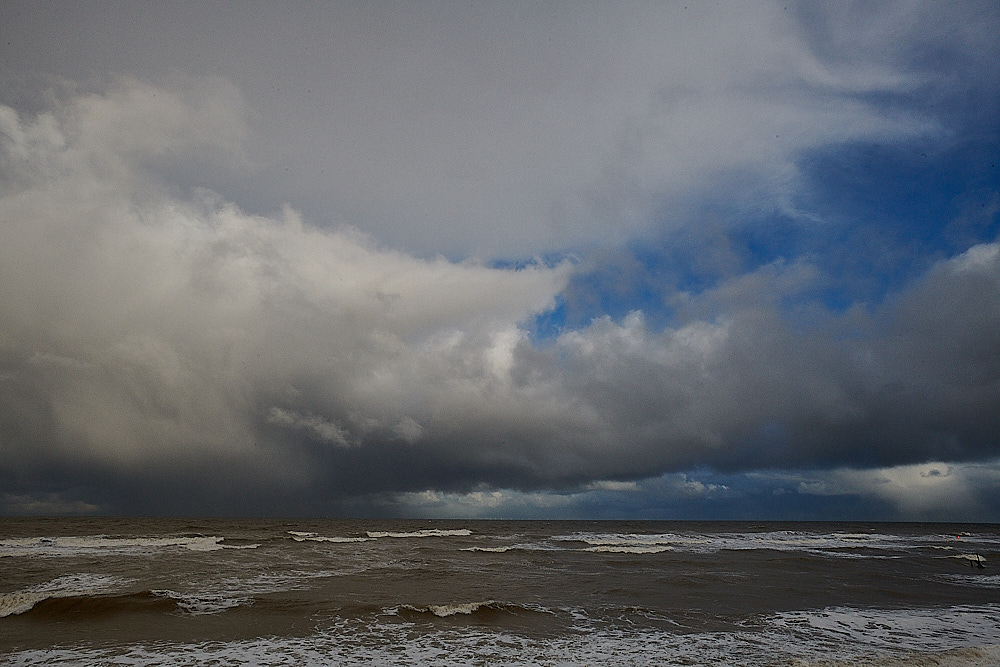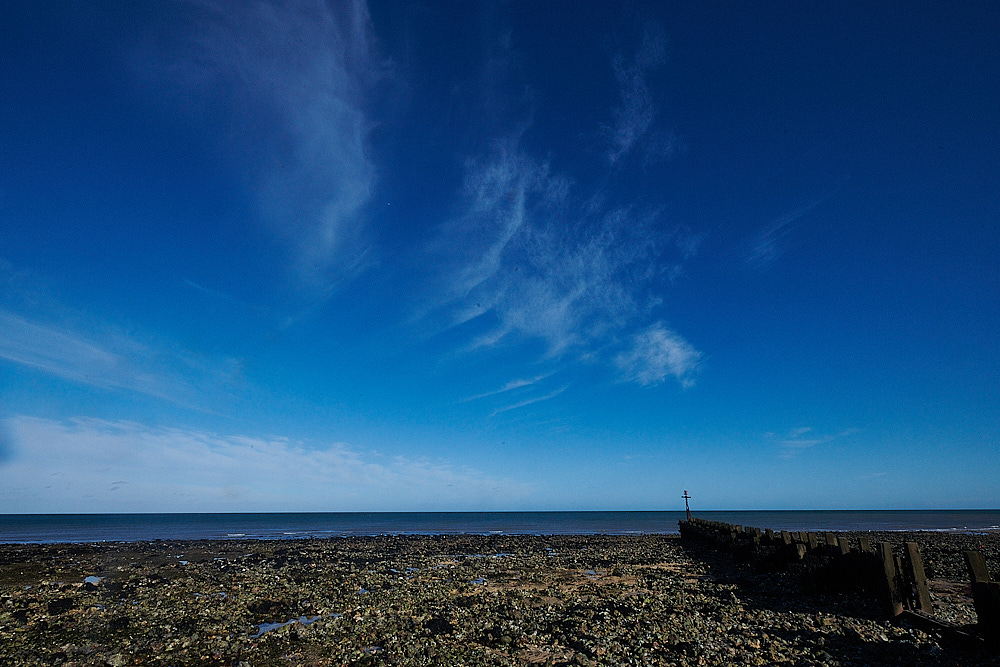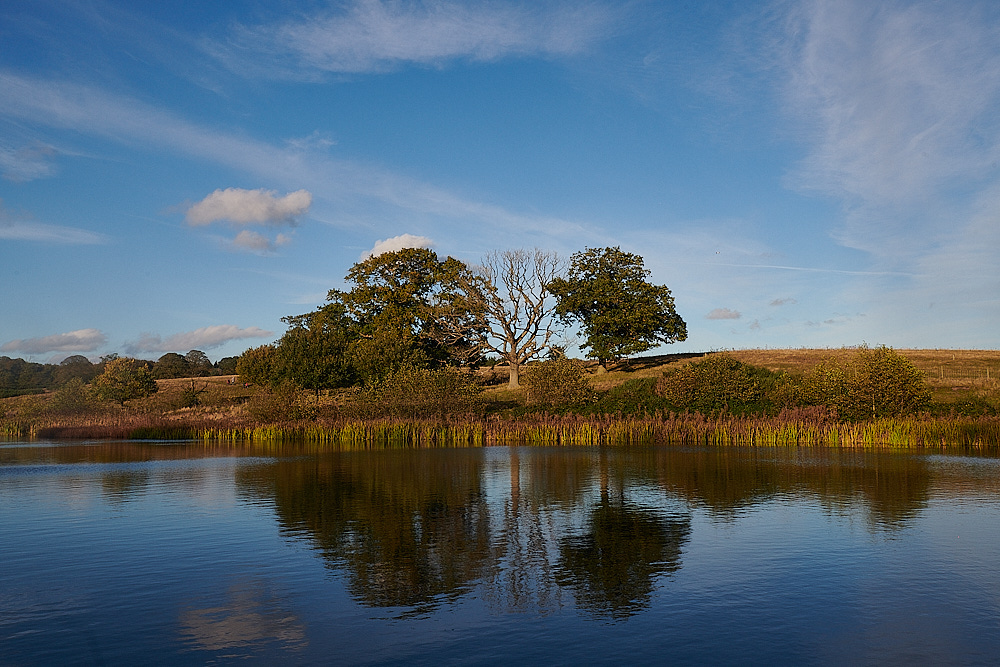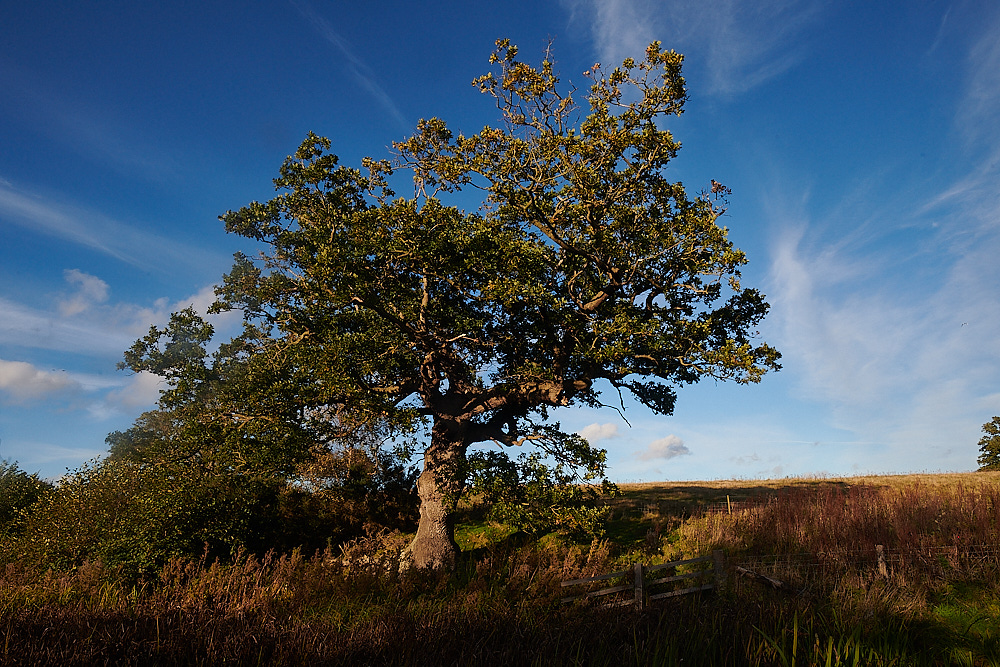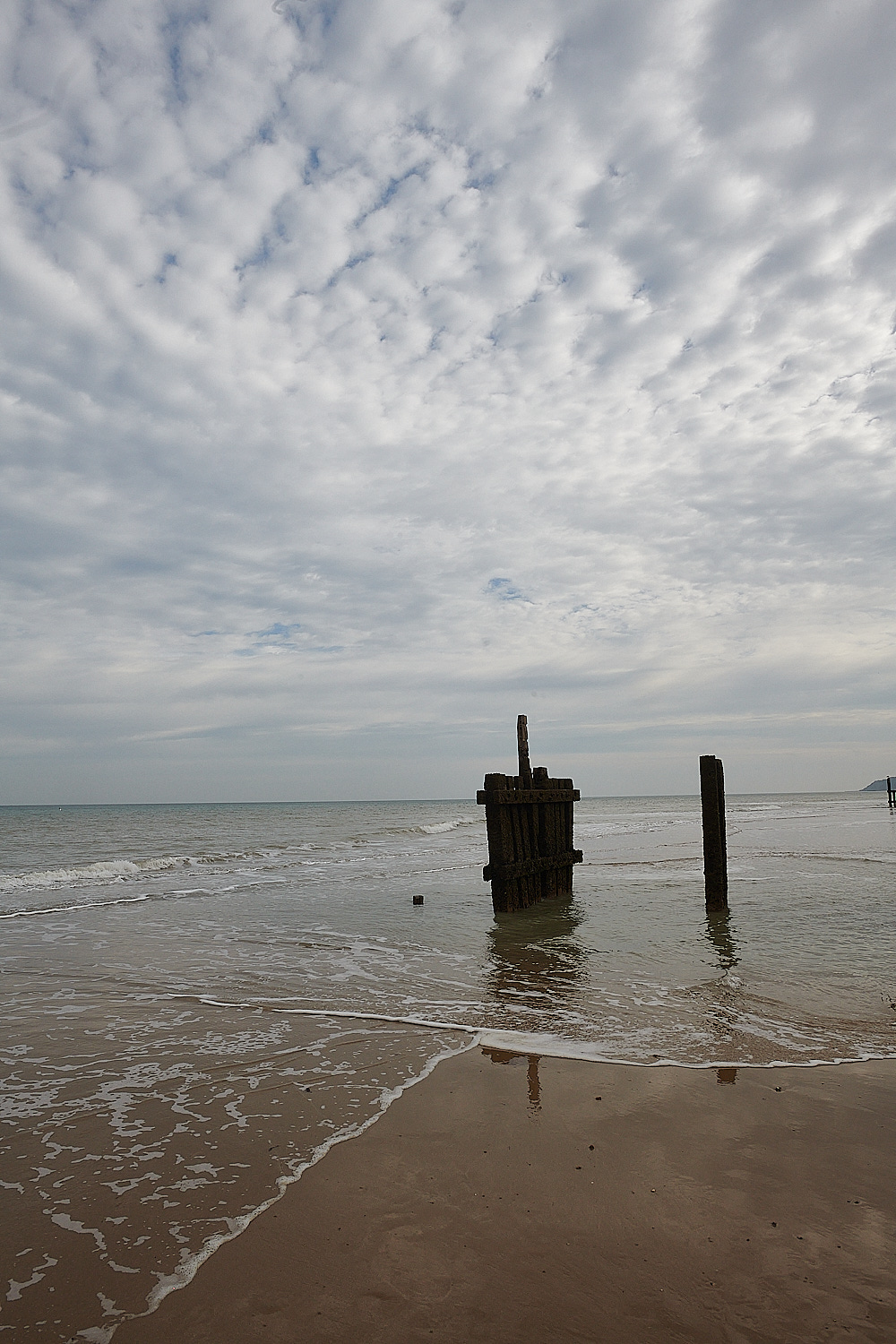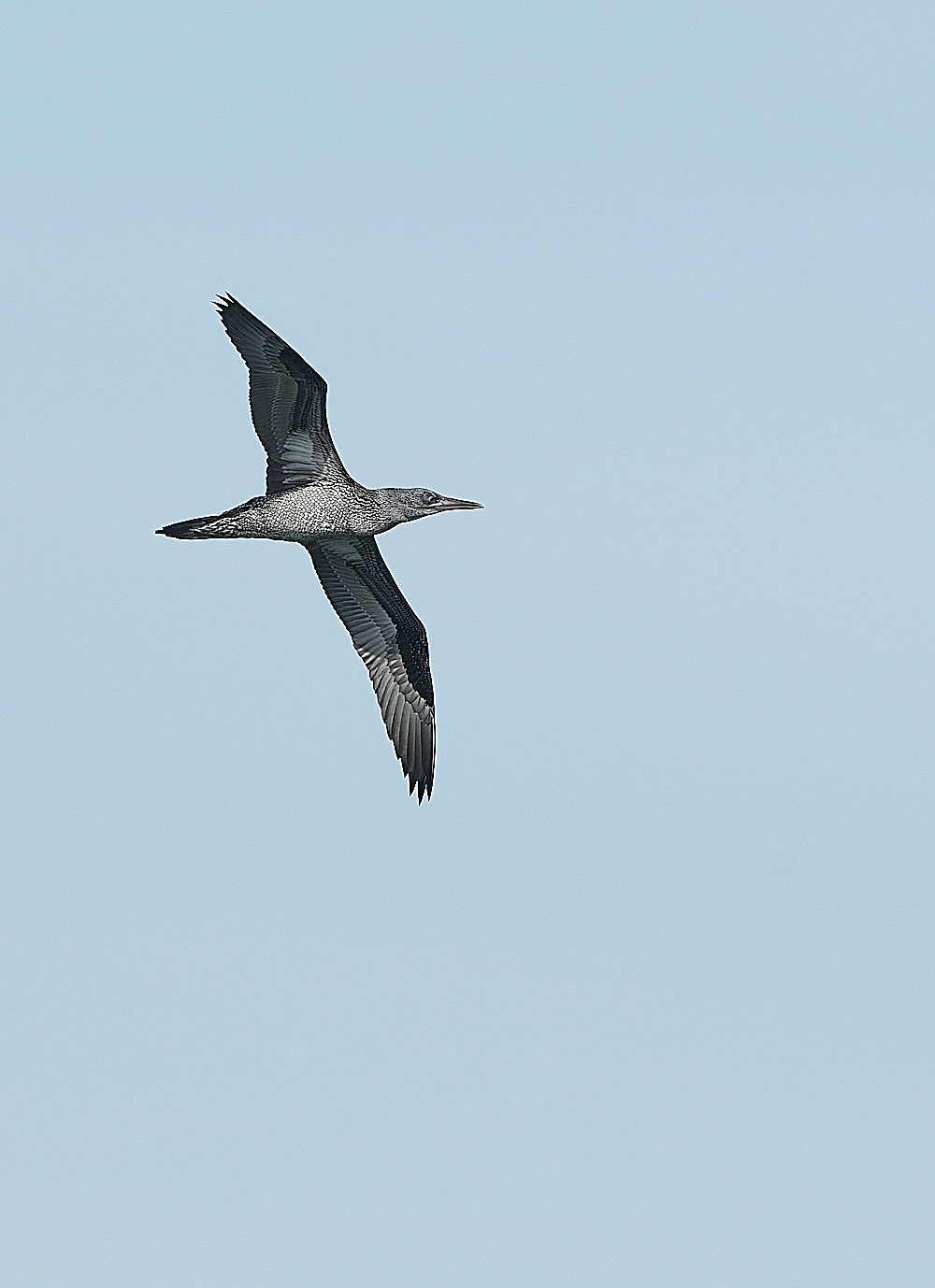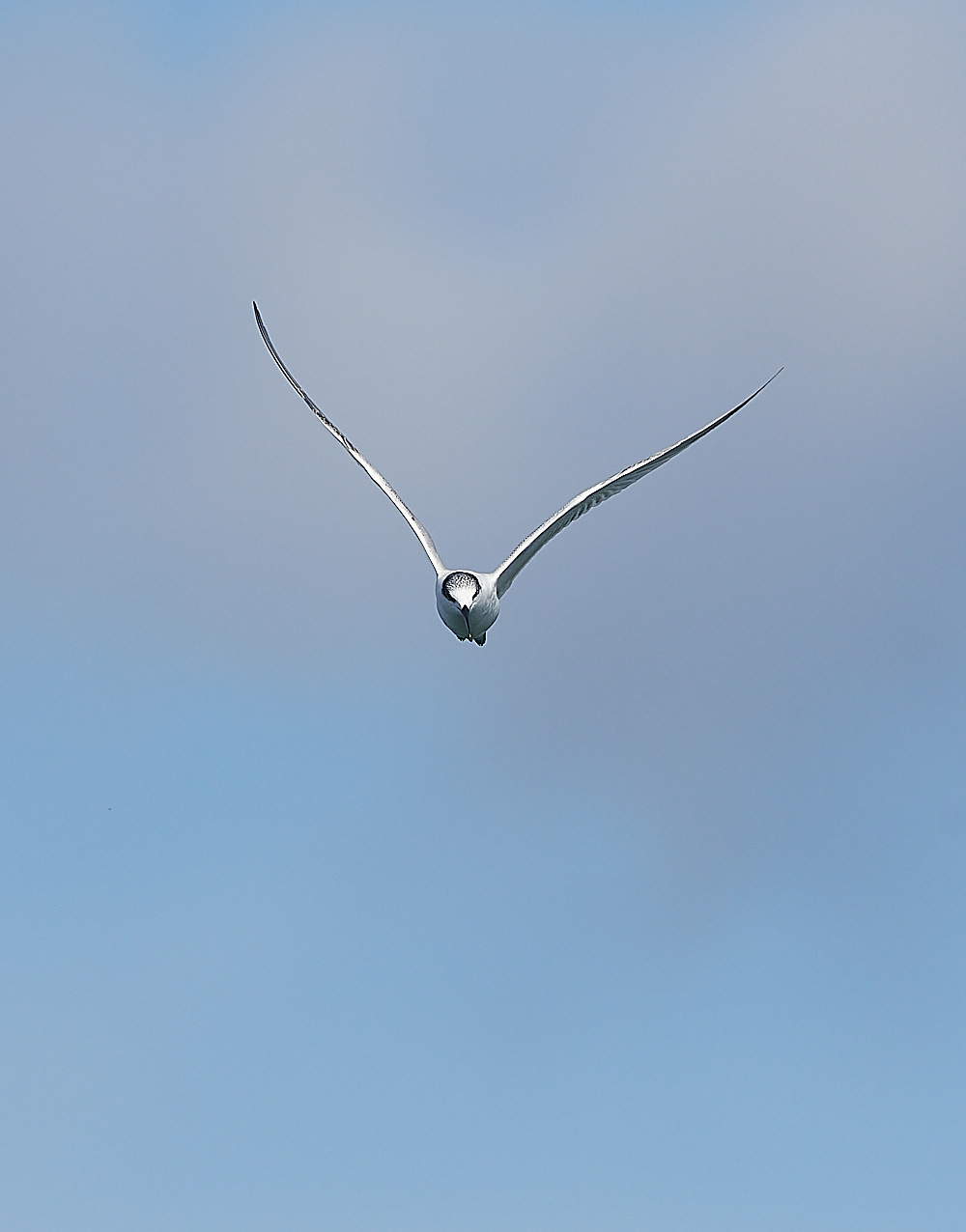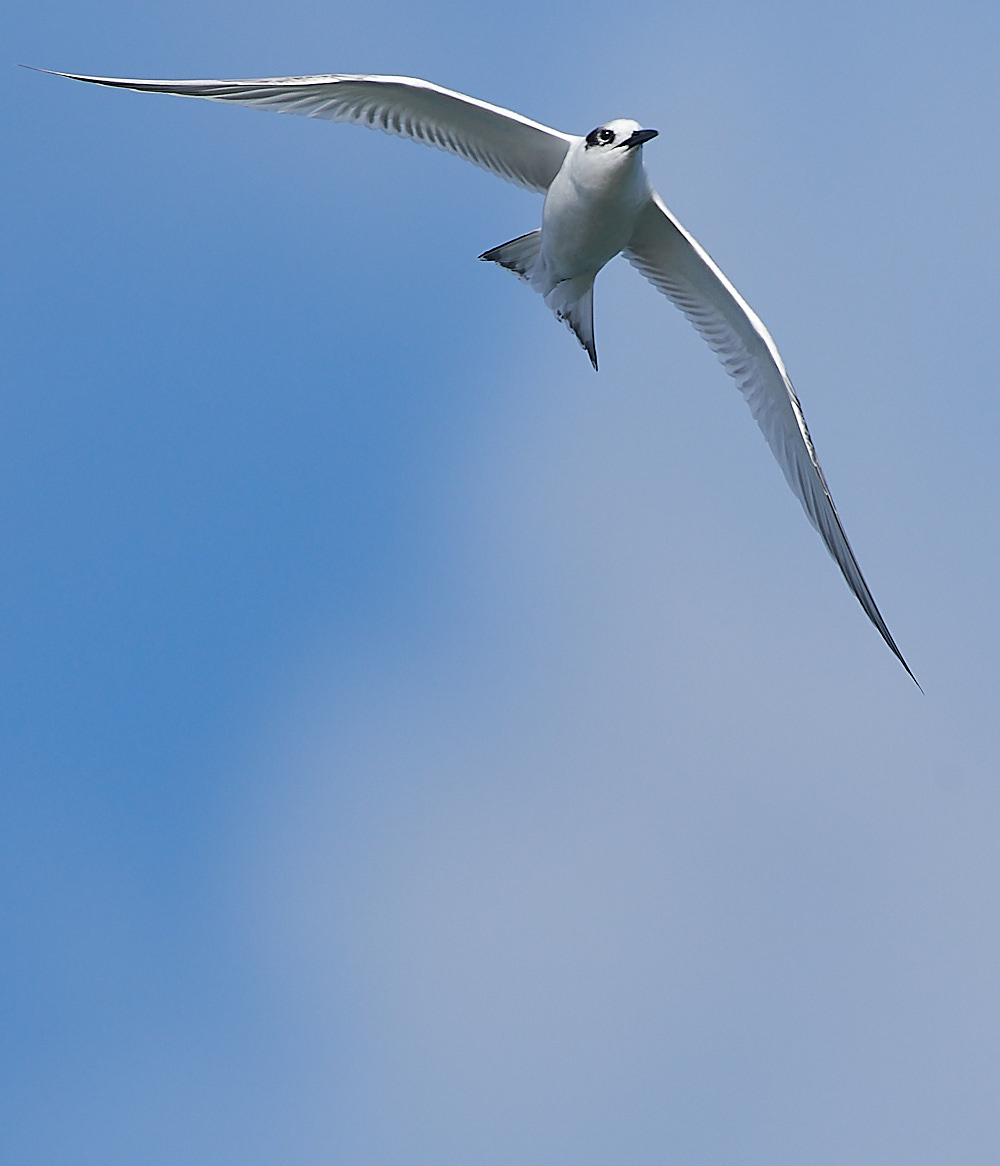Martham Staithe




Looking for Cattle Egrets was rather fruitless but it was the first morning with some sunshine for some time.
Ken Hill


Waxcap Sp Hygrocybe Sp?
Meadow Waxcap (Hygorcybe pratensis var pratensis)

Waxcap Sp Hygrocybe Sp?
Butter Waxcap (Hygrocybe ceracea)
Scurfy Twiglet (Tubaria furfuracea)

Mycena Sp?
Mycena Sp? growing on Yew

Forked Veilwort (Metzgeria furcata)
Bicoloured Bryum 9bryum dichotomum) Bulbils present in the leaf axils. Short concave leaves with a marked central nerve.
Hornschuch's Beard-moss (Pseudocrossidium hornschuchianum)
Great Hairy Screw-moss (Syntrichia ruralis subspecies ruralis)
Inkcap Sp Coprinus Sp?
Became
Coprinellus radicellus
From Yvonne
Coprinellus radicellus were the tiny Inkcaps on the dung - these were a nice find as this was a new species to Britain not that long ago.
We have found it in Norfolk before but not that many records.It needs microscopy to identify and there are similar looking species
but can be separated by the shape of the setules on the cap and the germ pore of the spores.
Dung Roudhead (Protstropharia semiglobata)
Eyelash Fungus with Black Hairs
Common Eyelash (Scutelllinia scutellata)
Eyelash type fungus on dung.
After careful removal of the substrate and turning it sideways there were no visible stellate hairs. I tried this a second time and managed to remove all the substrate (surprising how tough they were)
and there were no visible stellate hairs.
Thus
Cheilymenia fimicola
A few more pictures to support this id

The paraphyses are cylindrical with swollen tips.
The hairs have a sharp point.
Smooth Cup like Fungi growing on dead grass?
A bit iffy this one
from
Yvonne
I thought the tiny cyphelloid fungus on the grass was Arrhenia retiruga but Tony L thought it was Calyptella capula so that one is a bit iffy !
Decaying Bramble Leaf 

Turf Mottlegill? (Panaeolus fimicola)
On microscopy this became
Panaeolus aciuminatus
from
Yvonne
This one I thought might be P. fimicola but it had a central germ pore which separated it out.

Bracket Sp?

Blueing Bracket (Postia subcaesia)
Wonderful tussocky area. 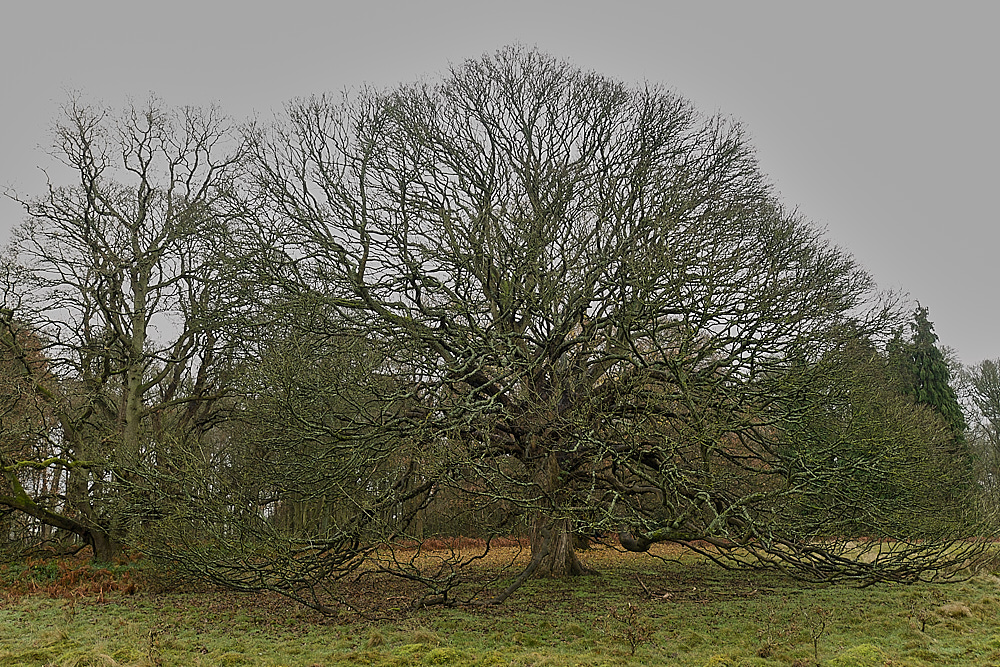

Grassland hummocks.
Hairy Curtain Crust (Stereum hirsutum)

Slime Mold Sp
Ganoderma Sp ? Southern Bracket - Artists Bracket ?
Very old Sweet Chestnut (Castanea sativa)
East Wretham


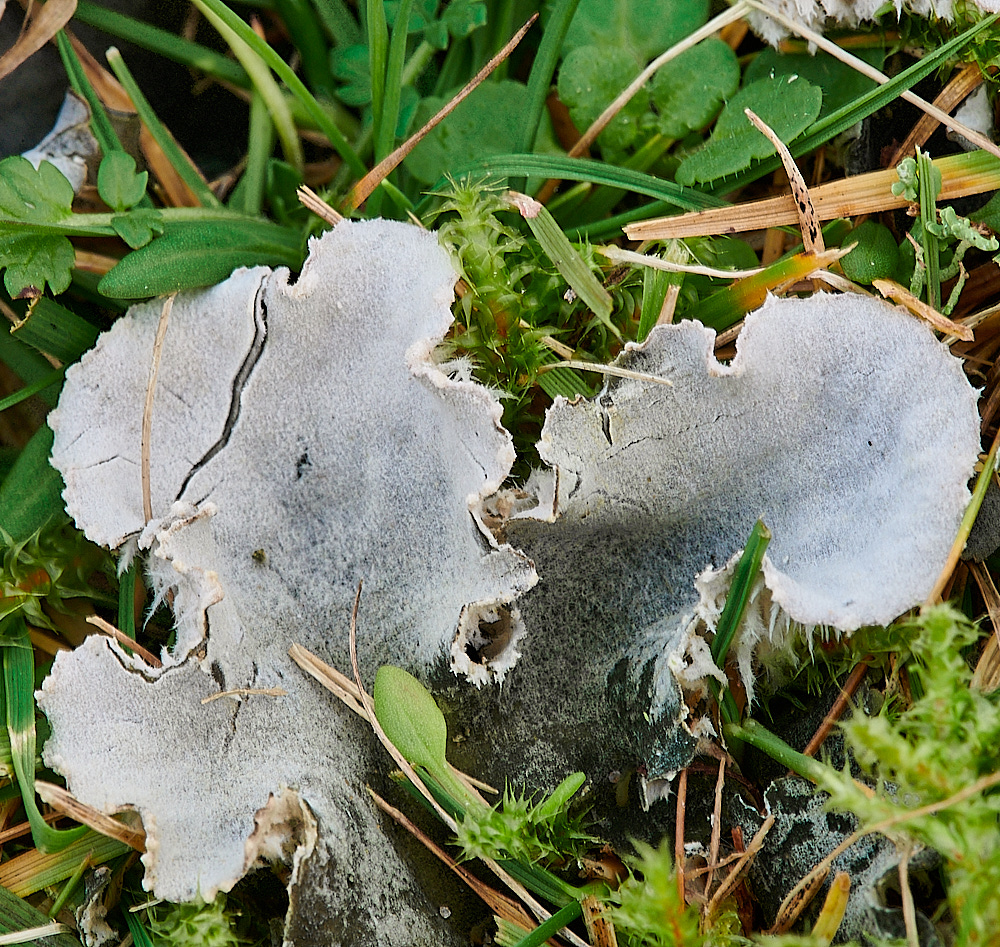
Lichen Sp



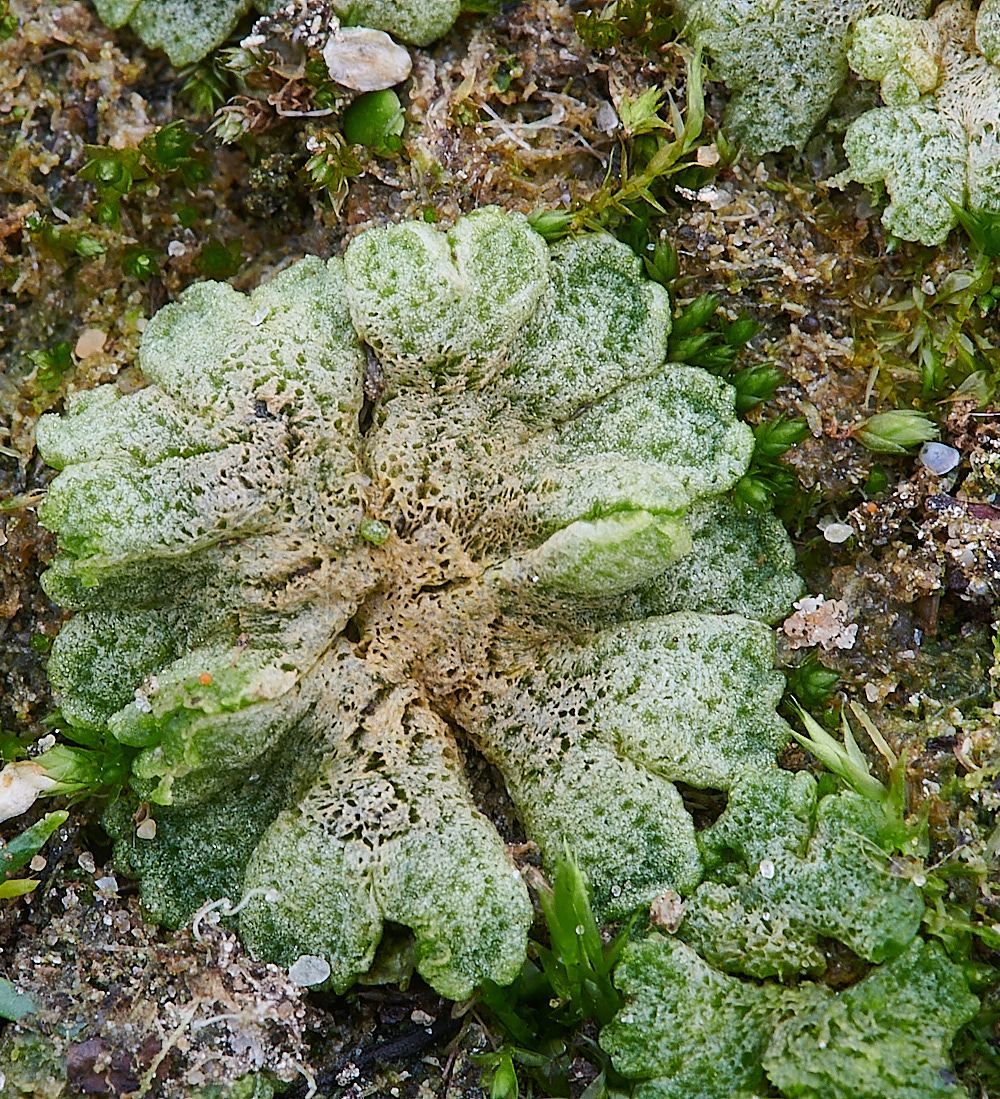
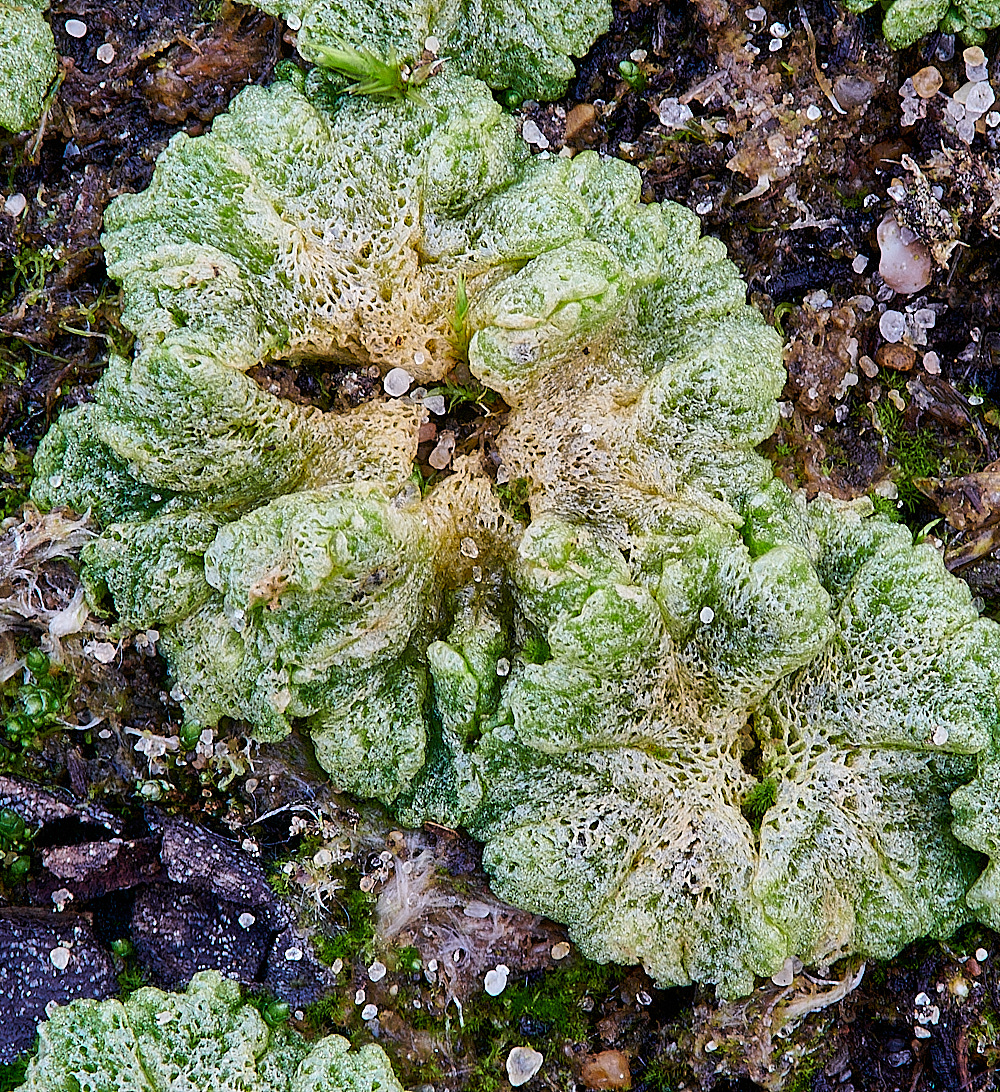
Cavernous Crystalwort (Riccia cavernosa)
Knieff's Hook-moos (Drepanocladus adjuncus)


Tree-moss (Climacium dendroides)
Redshank (Ceratadon purpureus)
Springy Turf-moss (Rhytidiadelphus squarrosus)
Sand-hill Screw-moss (Syntrichia rurali ruraliformis)
Great Hairy Screw-moss (Syntrichia ruralis ruralis)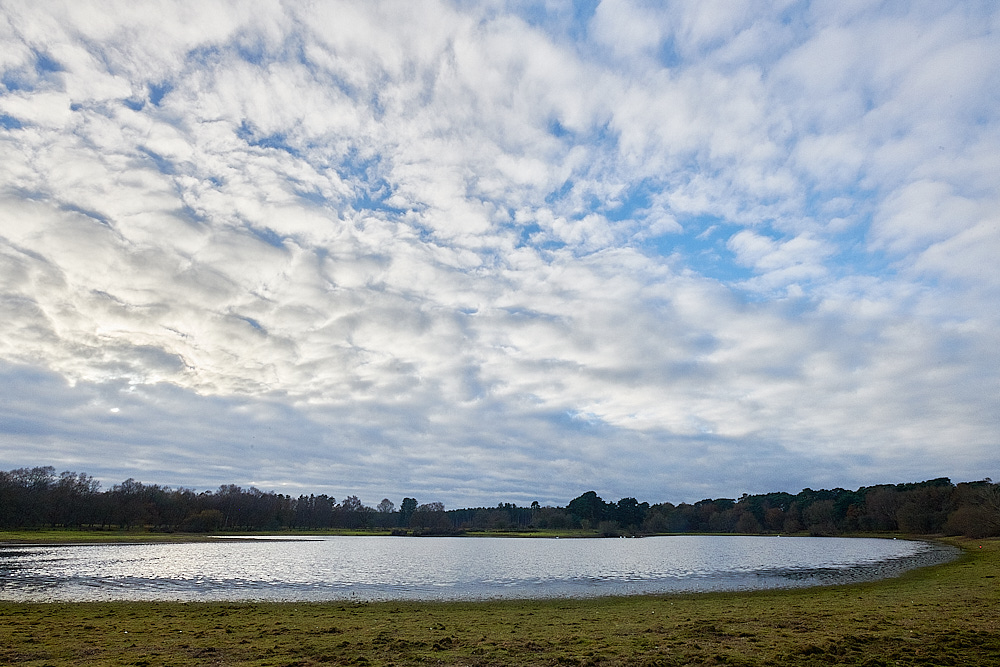

Houghen Plantation

A very fine Scot's Pine (Pinus sylvestris)
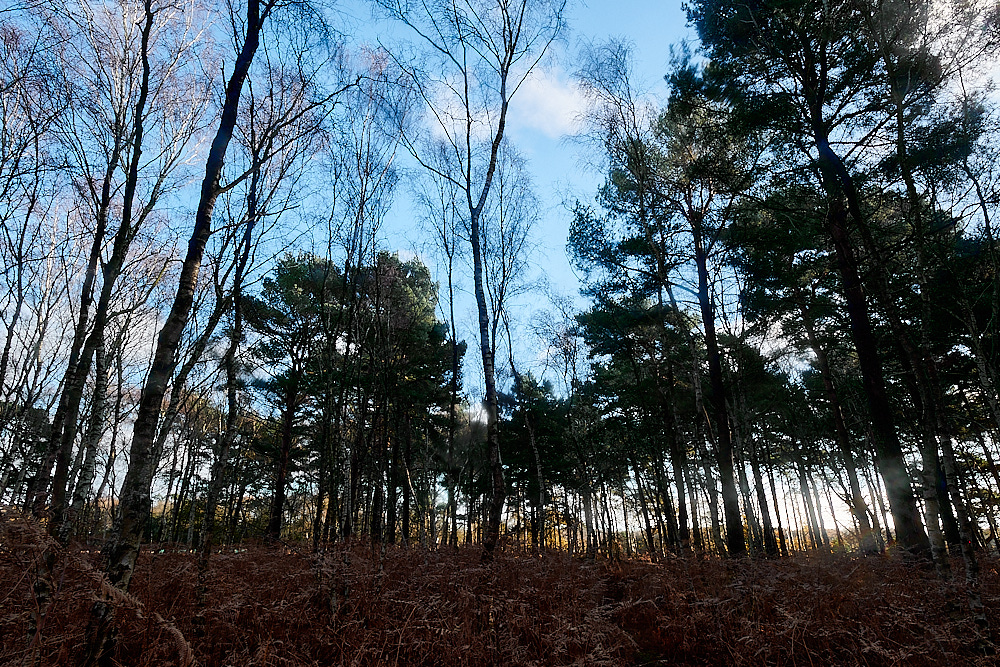
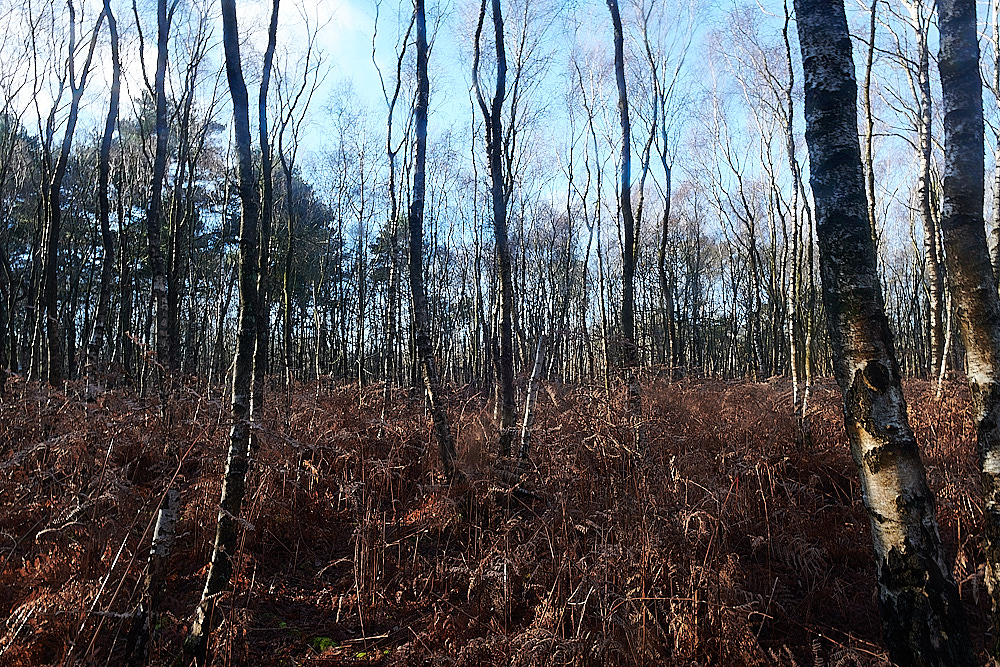

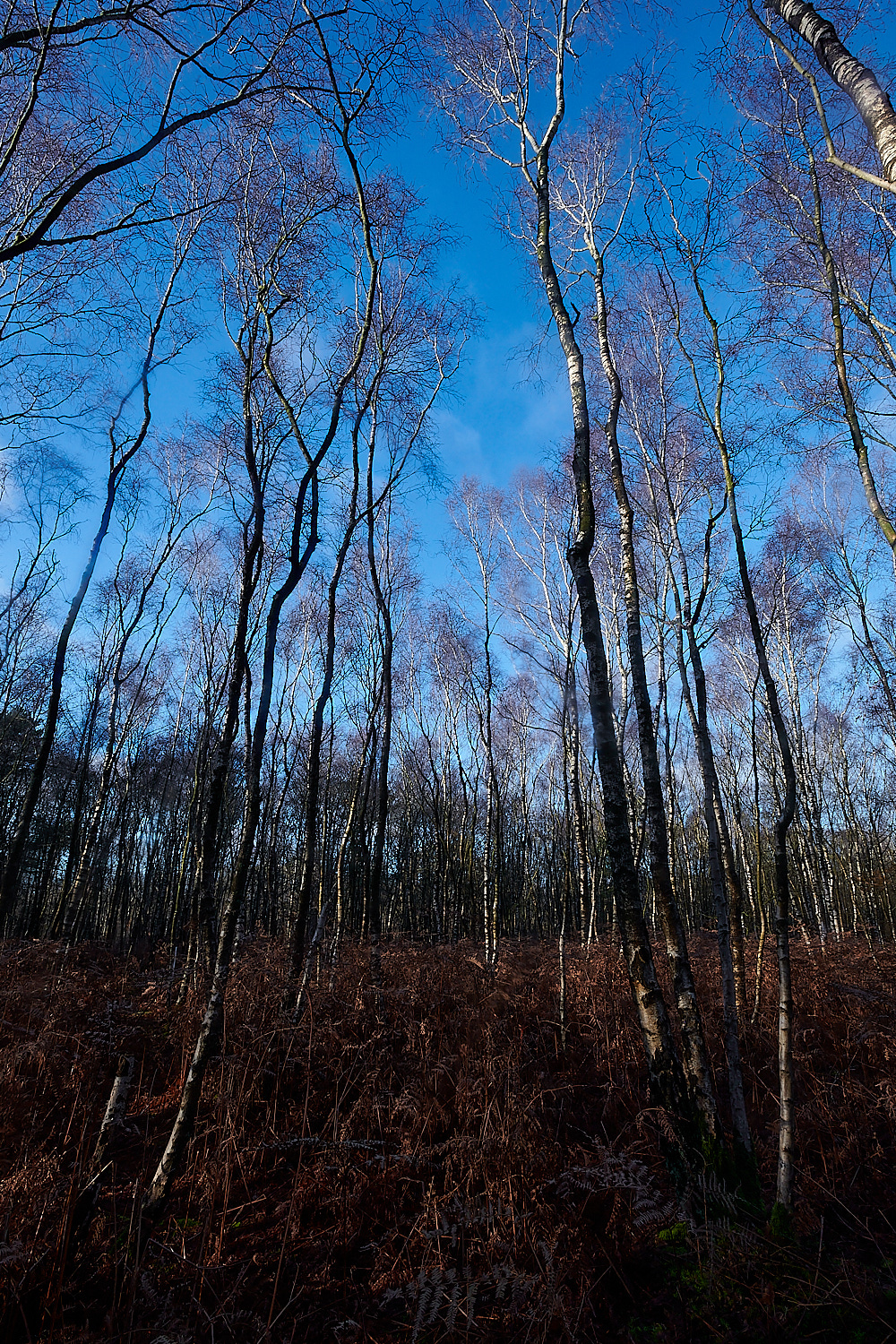


Wood Cauliflower Fungus (Sparassis crispa)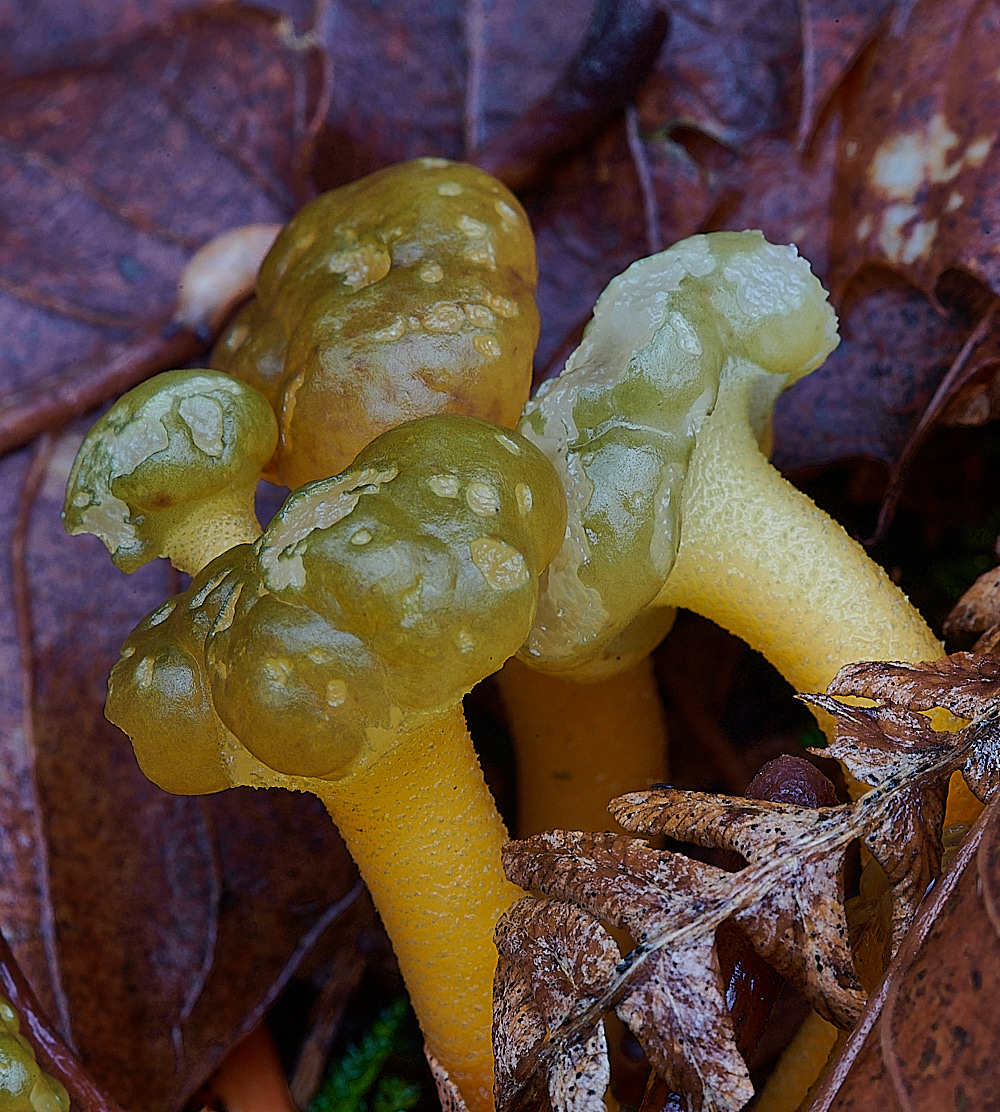
Jelly Baby (Leotia lubrica)

Glittering Woodmoss (Hylocomium splendens)

Variable-leaved Crestwort (Lophocolea heterophylla)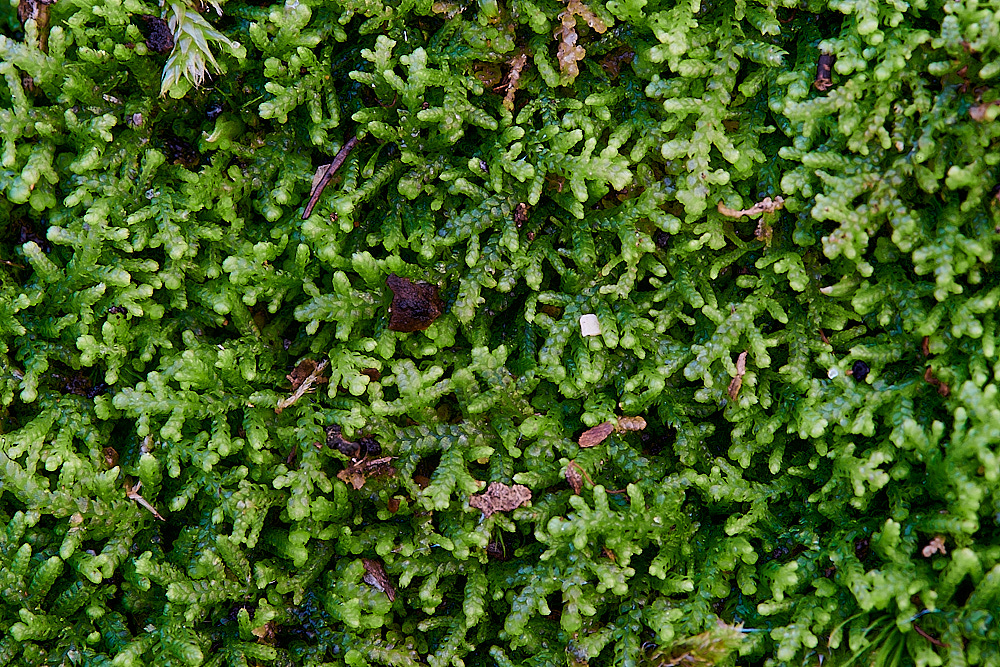

Creeping Fingerwort (Lepidozia reptans)
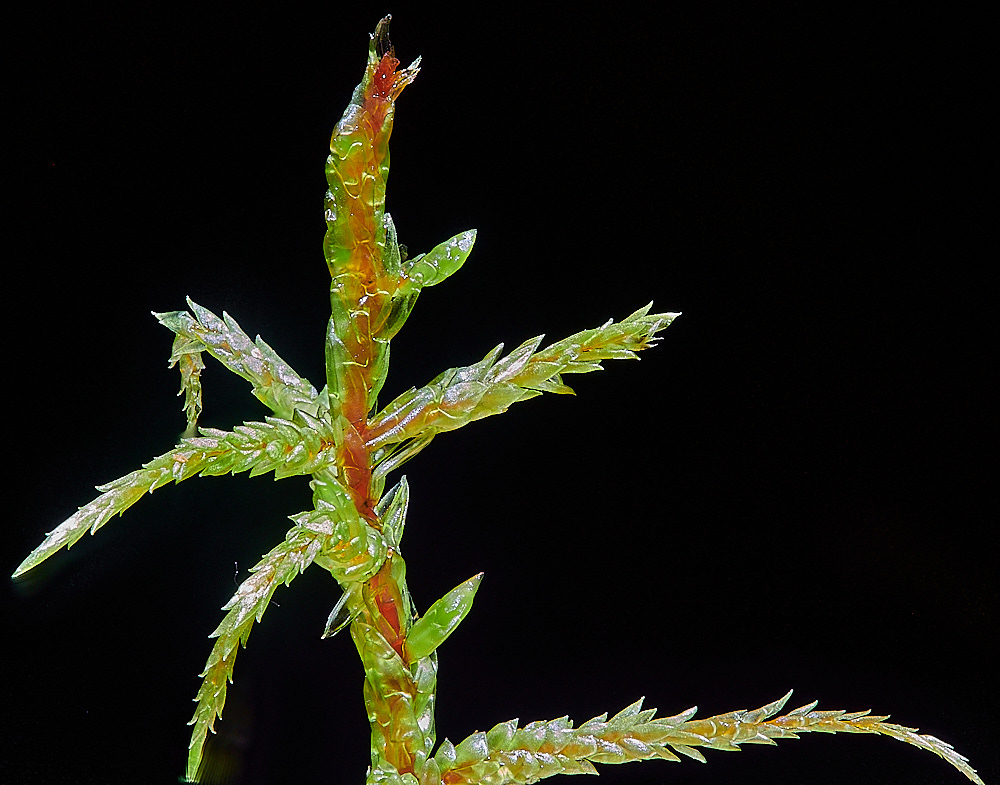
Red-stemmed feathermoss (pleurozium schreberi)
Little Shaggy-moss (Rhytidiadelphus loreus)
Pincushion Sp (Ulota Sp)
Elegant Silk-moss (Pseudotaxiphyllum elegans)
Rough-stalked feather-moss (Brachythecium rutabulum)
Cley



Black Headed Gull (Chroicocephalus ridibundus)

Common Gull (Larus cannus)
Shoveller (Spatula clypeata)

Today's Surf. Gulls all along the surf line.
Cley
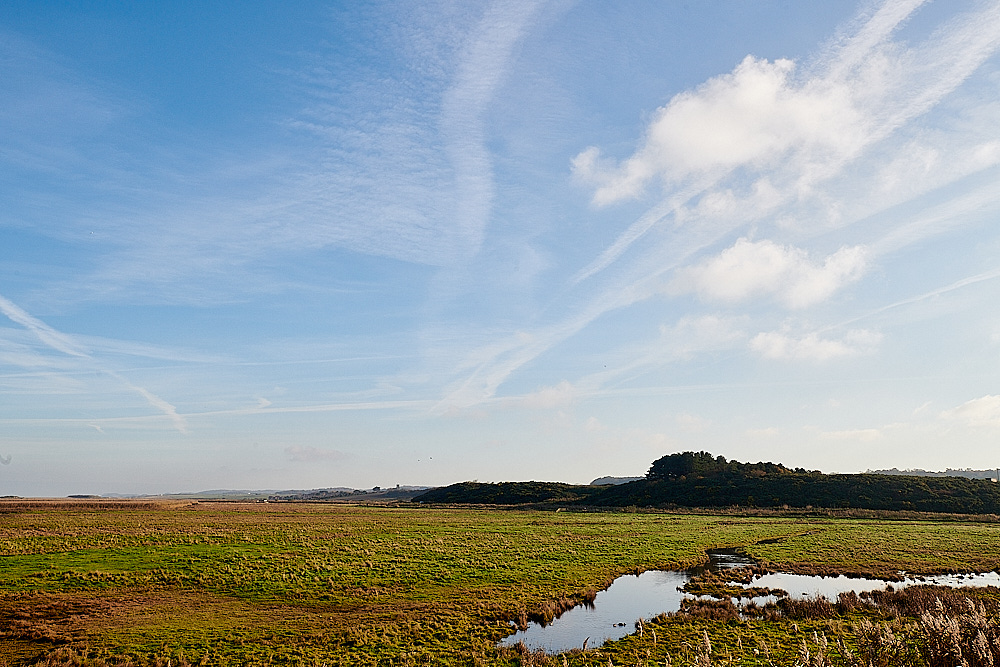







Little Grebe (Tachybaptus ruficollis)
Cormorant (Phalacrocorax carbo)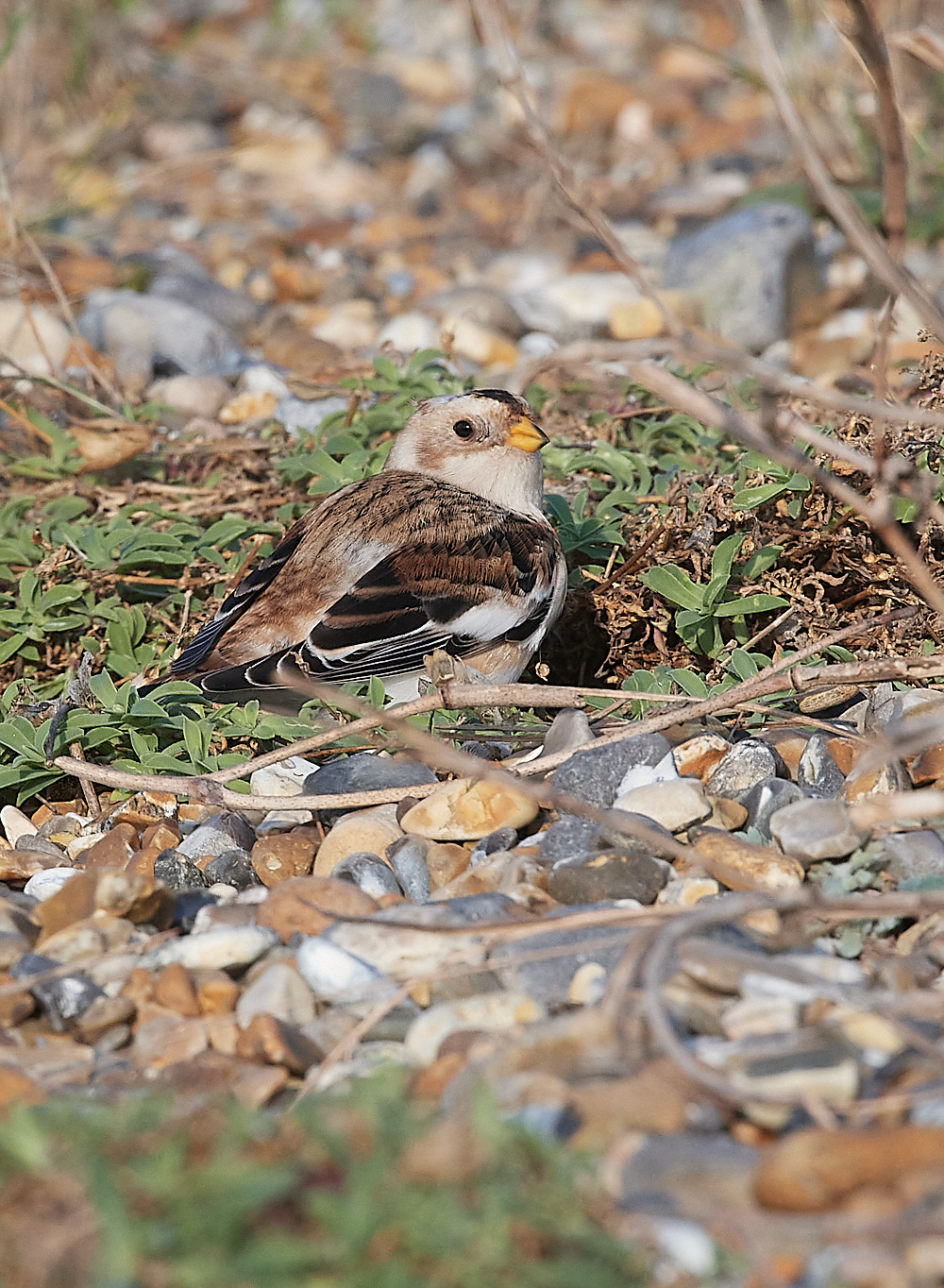


Snow Bunting (Plectrophenax invalid)
and
a
very distant
Isabelline Wheatear
Monk's Dale










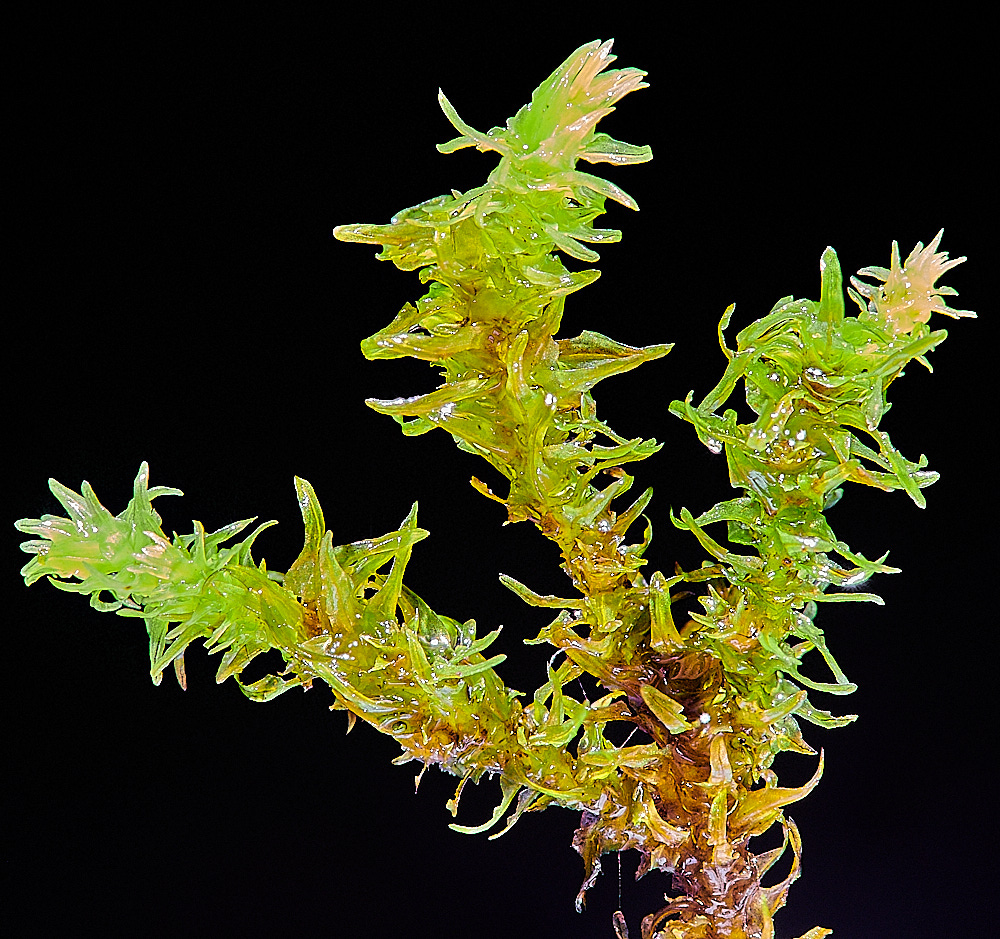
Rambling Tail-moss (Anomodon viticulosus)


Comb-moss (Ctenidium moluscum)
Great Plait-moss (Hypnum lacunosum var lacunosum)
Lesser Bird's-claw Beard-moss (Barbula convoluta)
Wall Scalewort (Porella platyphyla)
Tideswell Dale




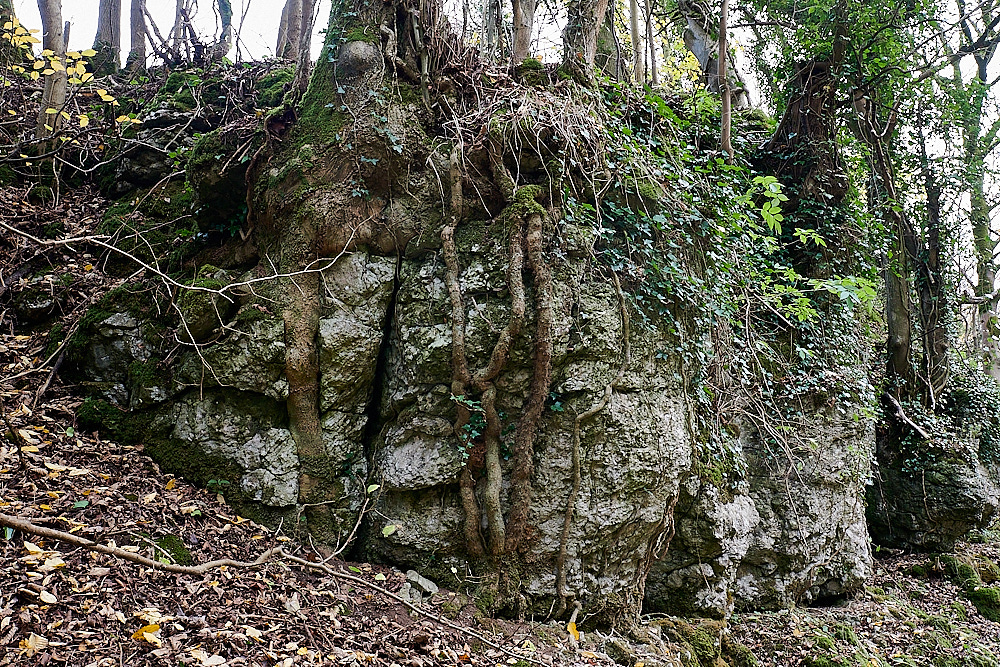


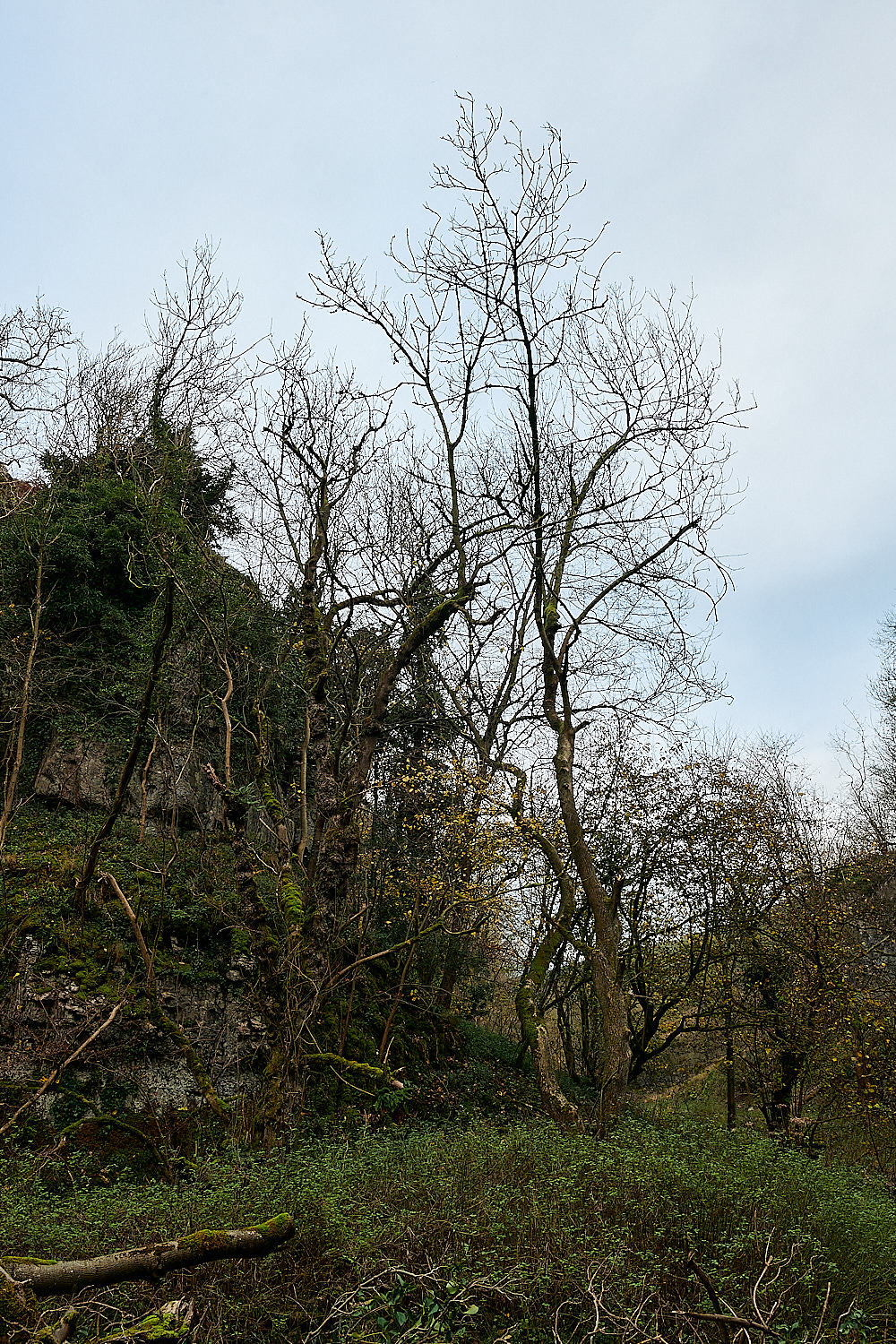
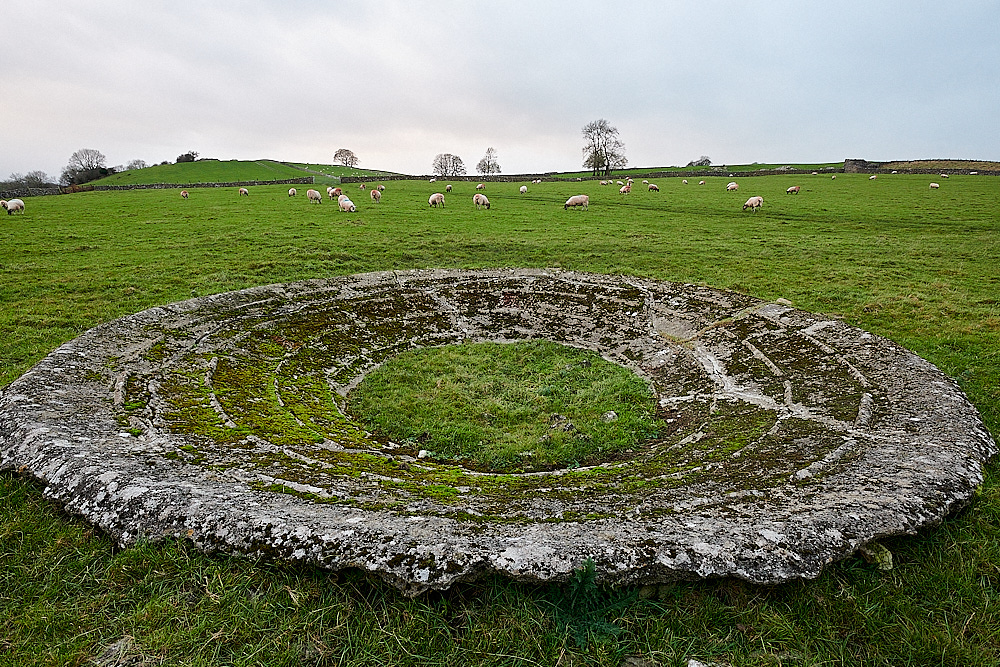



Spiral Extinguisher-moss (Encalypta streptocarpa)
Greater Featherwort (Plagiochila asplenoides) - Bifid Crestwort (Lophocolea bidentata) - Pointed Spear-moss (Caliergonella cuspidata)



Flat Neckera (Neckera complanata)

Rambling Tail-moss (Anomodon viticulosus) & Greater Featherwort (Plagiochila asplenoides) 


Frizzled Cris-moss (Tortella tortuosa)

Greater Featherwort (Plagiochila asplenoides)
Frizzled Crisp-moss (Tortella tortuosa) Dry
Frizzled Crisp-moss (Tortella tortuosa) Wet
Bendy Ditrichum (Ditrichum flexicaule) (perhaps?) growing through the Frizzled Crisp-moss (Tortella tortuosa)
Thickpoint Grimmia (Schistidium crassipilum)
Monsal Dale

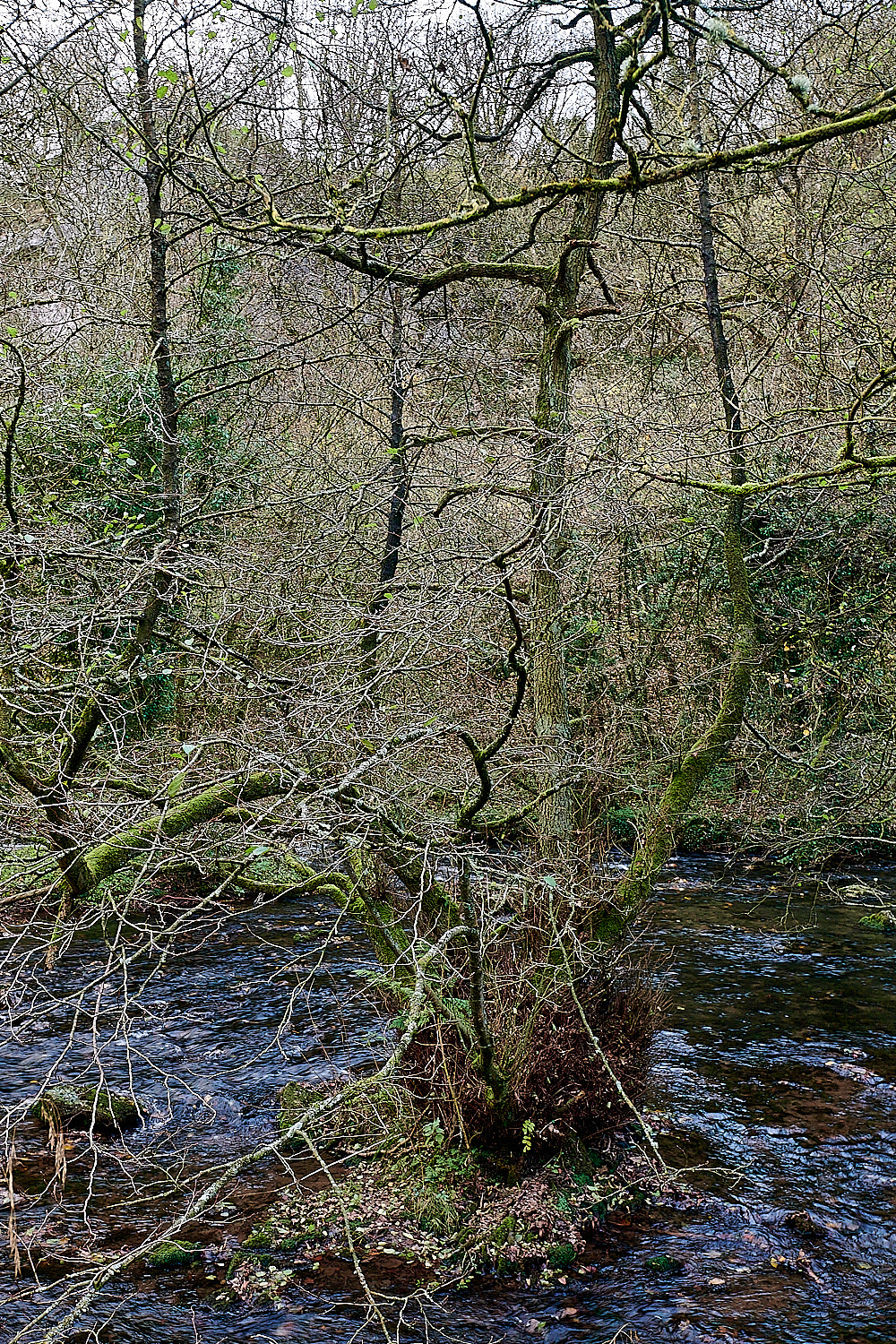

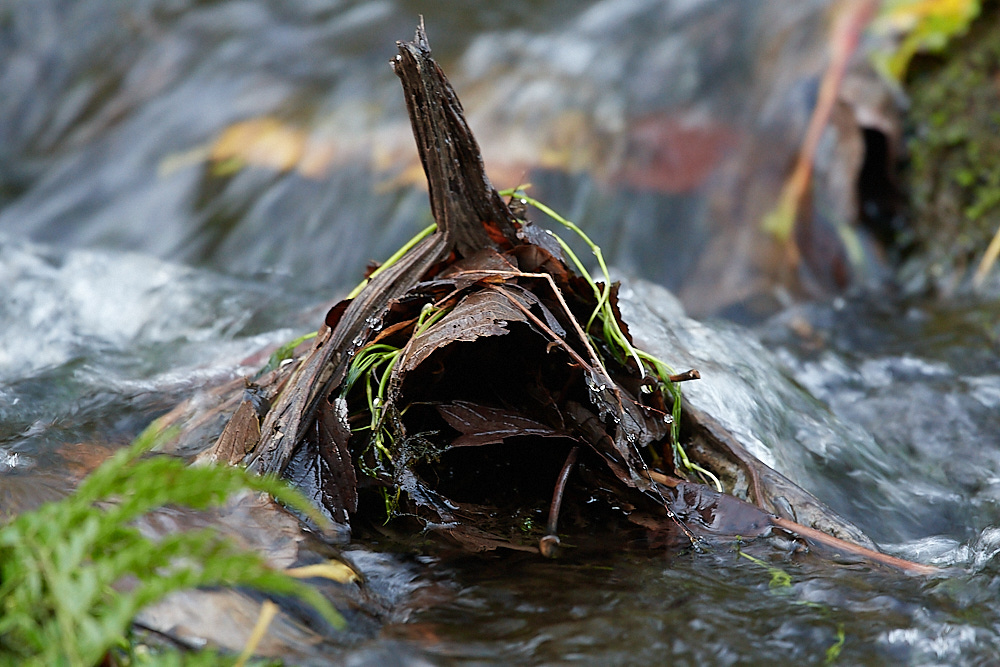








Dipper (Cinclus cinclus)
Maidenhair Spleenwort (Apselnium trichomanes)
Wall Rue (Aspelnium ruta muraria)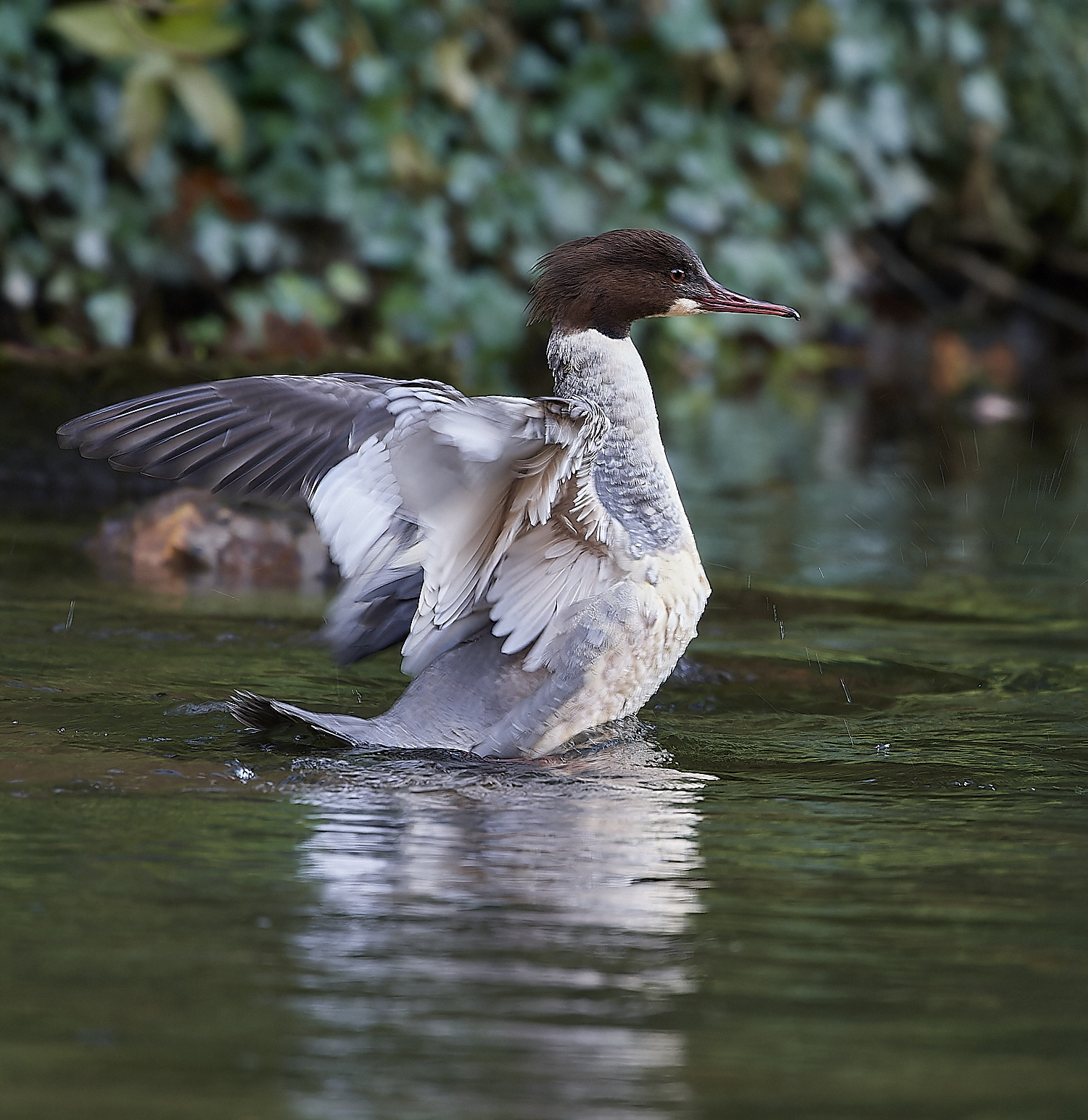

Goosander (Mergus merganser)
Cypress-leaved Plait Moss (Hypnum cupressiforme)
Rambling Tail-moss (Anomodon viticulosus)
Alder (Alnus glutinosa)
Monsal Dale Viaduct
Sheringham




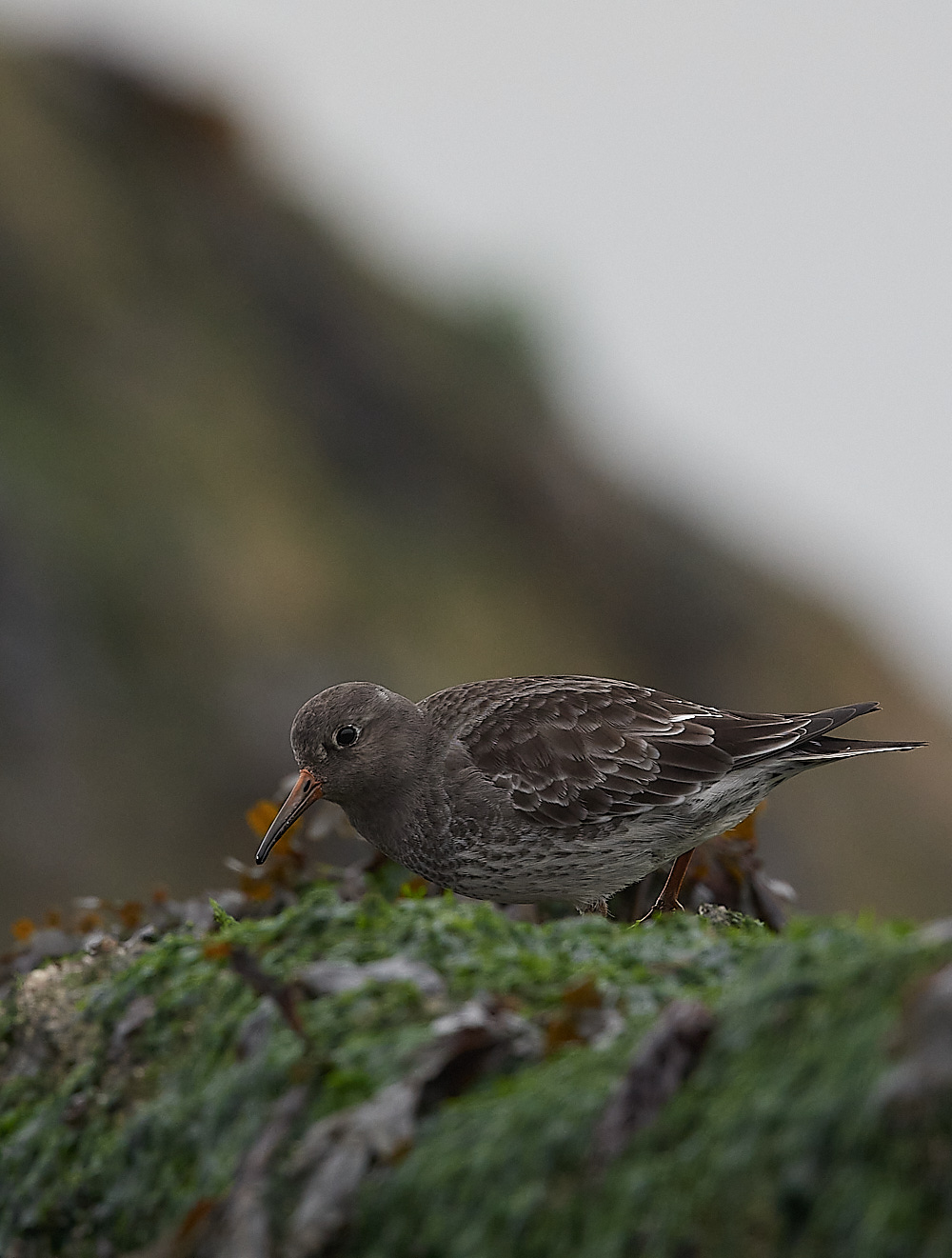


Purple Sandpiper (Calidris marítima)








Black Headed Gulls (Chrococephelus ridibundus) bathing.


Cormorant (Phalacrocorax carbo)




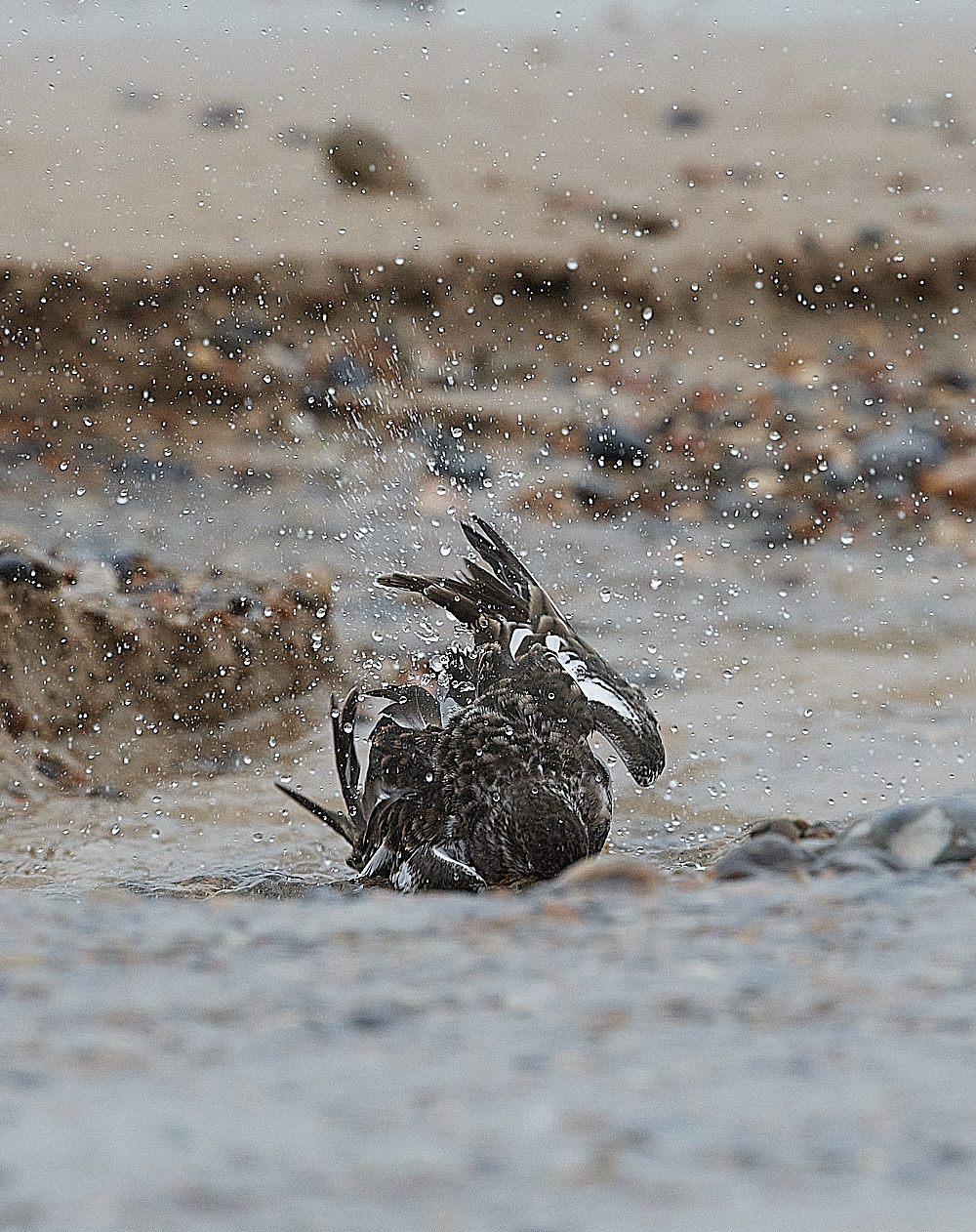

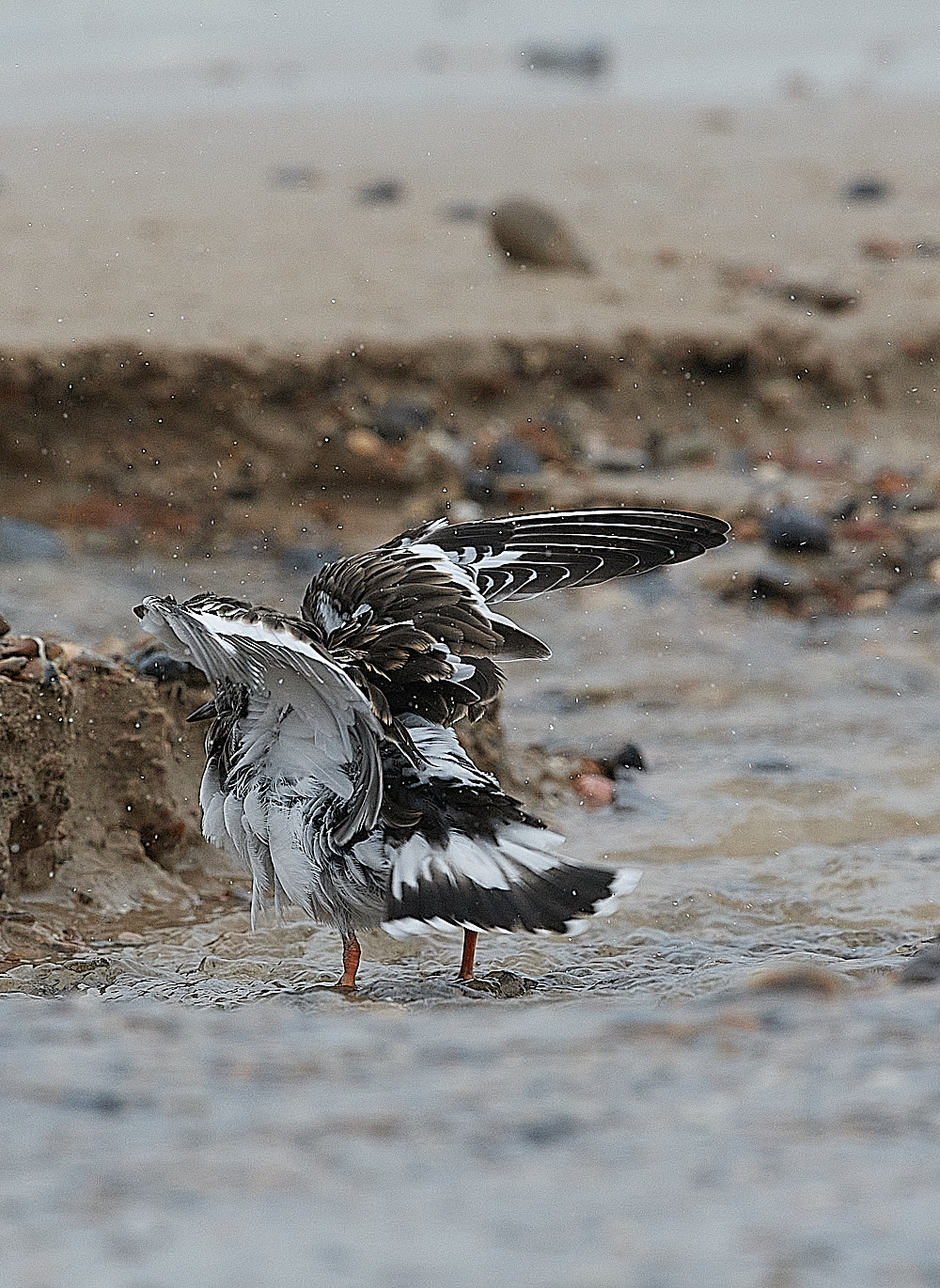

Turnstone (Arenaria interpres)


Cormorant (Phalacrocorax carbo)
Buxton Heath



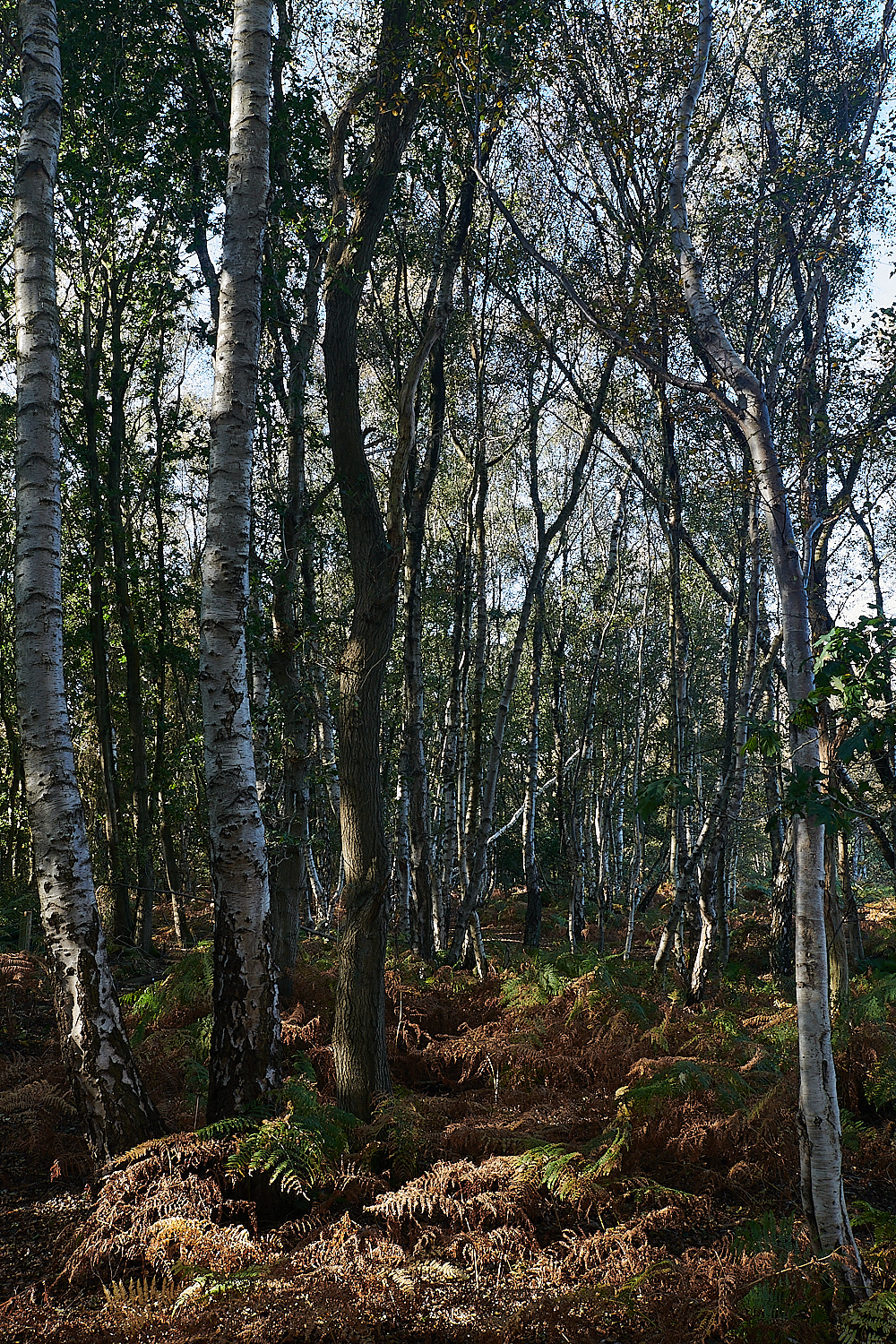
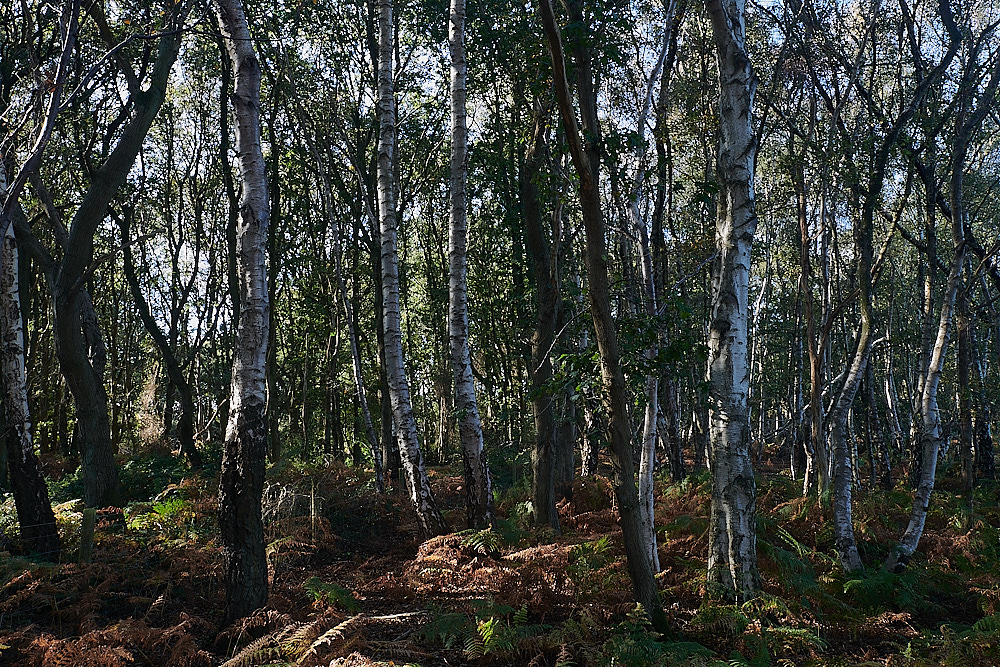


Dung Fungus Sp (Cheilymenia Sp)
Steve's thoughts on identifying this one
On to the little orange jobbies on the cow poop, under the dissecting scope the long pale lashes were very visible and rather dramatic,
there was a complete lack of the star shaped cluster of hairs at the base of each of the long hairs, which rules out Cheilymenia stercoria.
I can struggle with some of the similarities amongst the Cheilymenias so tend towards looking at microscopy sooner than I would with some other groups.
This paid off this time with the spores being long ovals with a very distinct DeBary bubble in the middle, looking like a large round oil drop in the middle,
this according to Peter Thompson points to Cheilymenia coprinaria rather than Cheilymenia fimicola as does the slightly narrower shape of the spores.
This view was supported by Fungi of temperate Europe, everything pointing nicely to Cheilymenia coprinaria, so a quick check on FRDBI
(the fungal records database of Britain and Ireland), where all our records ultimately go, which says that Cheilymenia coprinaria is a synonym of Cheilymenia fimicola.
A paper written in 1958 suggests that DeBary bubbles are actually a reaction to the chemical and squashing under a cover slip of the microscopy process rather than
an identification feature of the fungi so all in all safer to go with Cheilymenia fimicola. 15 minutes ID, 25 minutes research to resolve the findings.
The Black-edged Gills of Blackedge Bonnet (Mycena pelianthina)



3.5 x 8.0 µm
Cheilocystidia found on the gill edge. Mycena pelianthina)


Nail Fungus (Poronia punctacta)

Common Bonnet (Mycena galericulata)
Plain Earthtongue (Geoglossum umbratile)
Steve's delightful exposition of how he reached this conclusion.
To finish off before lunch with a nice easy quick one it was on to the Earth tongue (another one that appeared just after you left Lorraine).
No point going to Kibby as he doesn't do ascomycetes and neither does Funga Nordica. So in the absence of forking out £130 for
B & K Fungi of Switzerland, Volume 1: Ascomycetes, we are left with Peter Thompson and Fungi of temperate Europe.
Starting with Peter Thompson as he does nice drawings of spores etc. there are four to choose from. Geoglossum have septate spores,
one of the options has 6-9 septa, one has 13-15 septa, one has 5-7 septa and one has 3-7, nice and easy just count the septa I thought.
Unfortunately the spores have no septa when young and develop the septa as they get older so we are trying to find spores that have been
released from the asci and are mature enough to have developed their full quota of septa. Scraping a very small part of the surface of the
fruiting body and spreading it on a slide, I started out with Meltzer's as the asci react by bluing but then you can't see the spores as there
is too much blue to see through, try again with plain water as the colour of the spores is important, not worth doing as without stain
nothing stood out, try again this time with plaq search, much better and there are anything between 0 and 7 septa, which fits nicely
with G. glutinosum, except as implied by the name it should have a glutinous layer and it didn't, oh and the spores are the wrong size.
So lets try G. Cookeanum, number of Septa is right but shape of fruiting body is wrong and our spores have oil drops and G. Cookeanum doesn't.
By this time hunger is kicking in so break for lunch. Return refreshed and look at Fungi of temperate Europe, lots more to choose from but no helpful drawings.
Time to accept that we are going to have to use a key so go for Geoglossaceae of Britain - Brian Spooner, realise that we are going to have to find some
paraphyses amongst the asci, (paraphyses are, to use an obscure music reference, the bits between the bits). So another slide prep this time with
cotton blue as this is supposed to be good with asccomycetes, no paraphyses found, another slide prep, this time with my old favourite plaq search,
actually found one and managed to count the septa, (some species have paraphyses with septa and the number and spacing of the septa feeds into the ID)
but our septa have droopy heads which isn't mentioned in the key. Every attempt at the key takes us to G. glutinosum, but it isn't glutinous.
Another slide prep with Cong red and loads of nice paraphyses with drooping tips. Moving on to a document with key that seems more aimed
at our knowledge level, Geoglossaceae - Earth Tongues Beginners Guide - Irene Ridge. First up it is written in a nice friendly way and joy of joys
it has nice drawings and there we find spores of the right size with up to seven septa, paraphyses with the drooping tips Geoglossum umbratile - Plain Earthtongue.
Going back and reading Fungi of temperate Europe again it very clearly states that Geoglossum umbratile has paraphyses with drooping tips. Time wise dare I admit to
the fact that I spent well over 4 hours on this one fungi.
Photos of the spores and the paraphyses.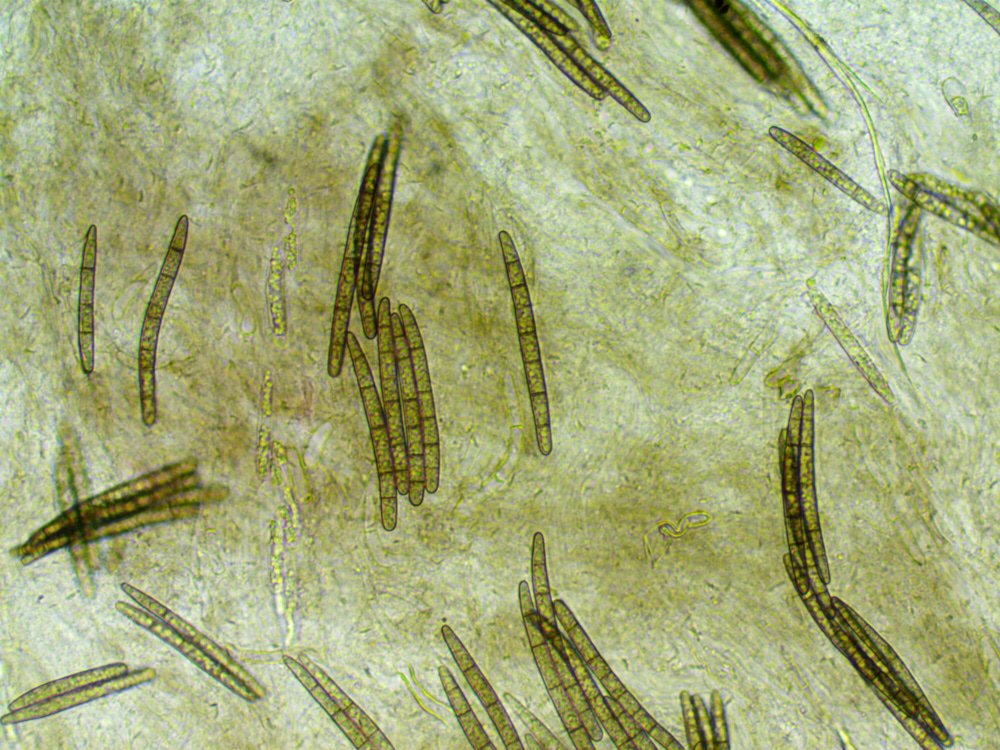



Fairy Fingers (Clavaria fragilis) perhaps?
Microscopically this turned out to be
Pointed Club (Clavaria acuta)
Thanks to Steve Judd for id & the thinking below.
Then we attacked the rather nice white Clavaria (sadly these appeared just after you left Lorraine) that were growing in the grass near the end,
we were fairly sure that this would be fairly easy as there really aren't that many white Clavaria. Using Kibby vol 1
we worked out that the growth habit indicated C. crosslandii or C. acuta the shape pointed towards C. acuta or C. fragilis.
A fine sliver taken with a razor blade to get to the spores, stained with plaq search. C. fragilis has heavily ornamented spores and these were smooth, C. crosslandii
has spores half the size of those of C. acuta so it was very easy to decide that we have Clavaria acuta - Pointed Club. 10-15 minutes

Trametes Sp?

The Blusher (Amanita rubescens)
Small Stagshorn (Calocera cornea)
Russula Sp

Stinkhorn Egg (Phallus impudicus)

Heath Star-moss (Campylopus introflexus) & Bank Haircap (Polytrichum formosum)
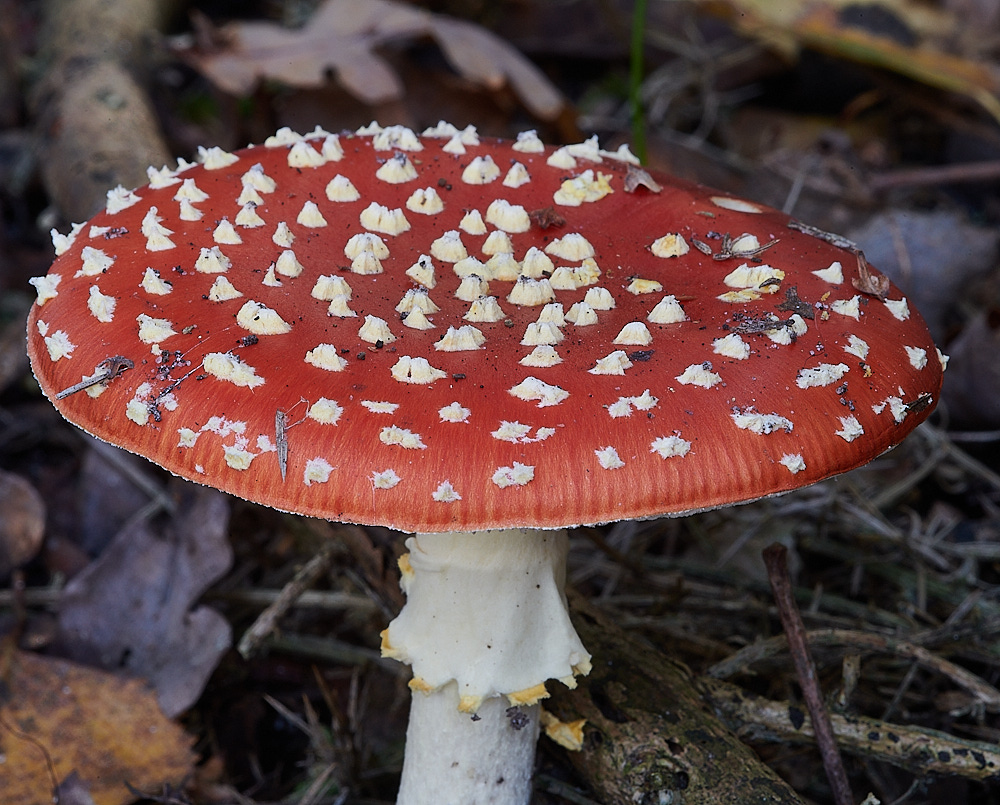
Fly Agaric (Amanita muscaria)


Broom Fork-moss (Dicranum scoparium)


Crimped Gill (Plicatura crispa)

Bank Haircap (Polytrichum formosum)
Pointed Spear-moss (Calliergonella cuspidata)
A Norfolk Common



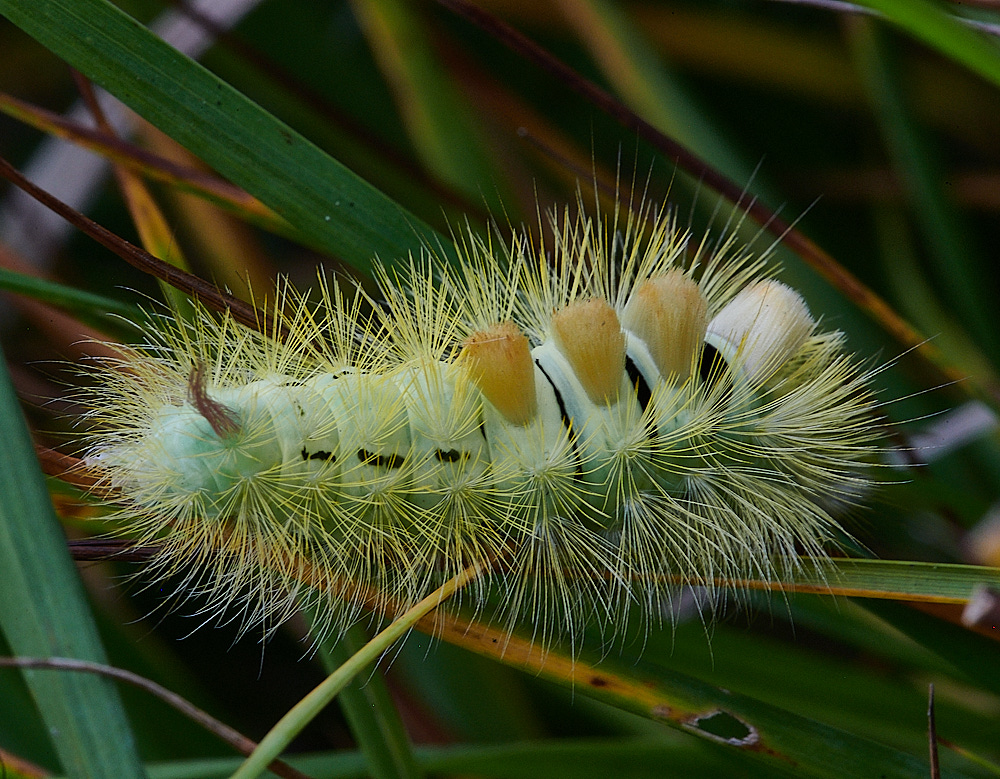

Pale Tussock Moth (Calliteara pudibunda)



Cell structure at base of leaf x 400

Leaf tip x100
Leaf tip cells x 400
A Dicranum Sp ? with crinkled leaves.
turned out to be
Crisped Fork-moss (Dicranum bonjeanii)


Heath Plait-moss (Hypnum jutlandicum)
Common Haircap Moss (Polytrichum commune)


Leaf Tip x400
Strict Haircap (Polytrichum strictum)
You can see the unrolled leaf margins in the photos and the brown tip is untoothed. It grows in hummocks.
Not the best of pictures but it does clearly show the inrolled margins of the leaf.
Strict Haircap (Polytrichum strictum)

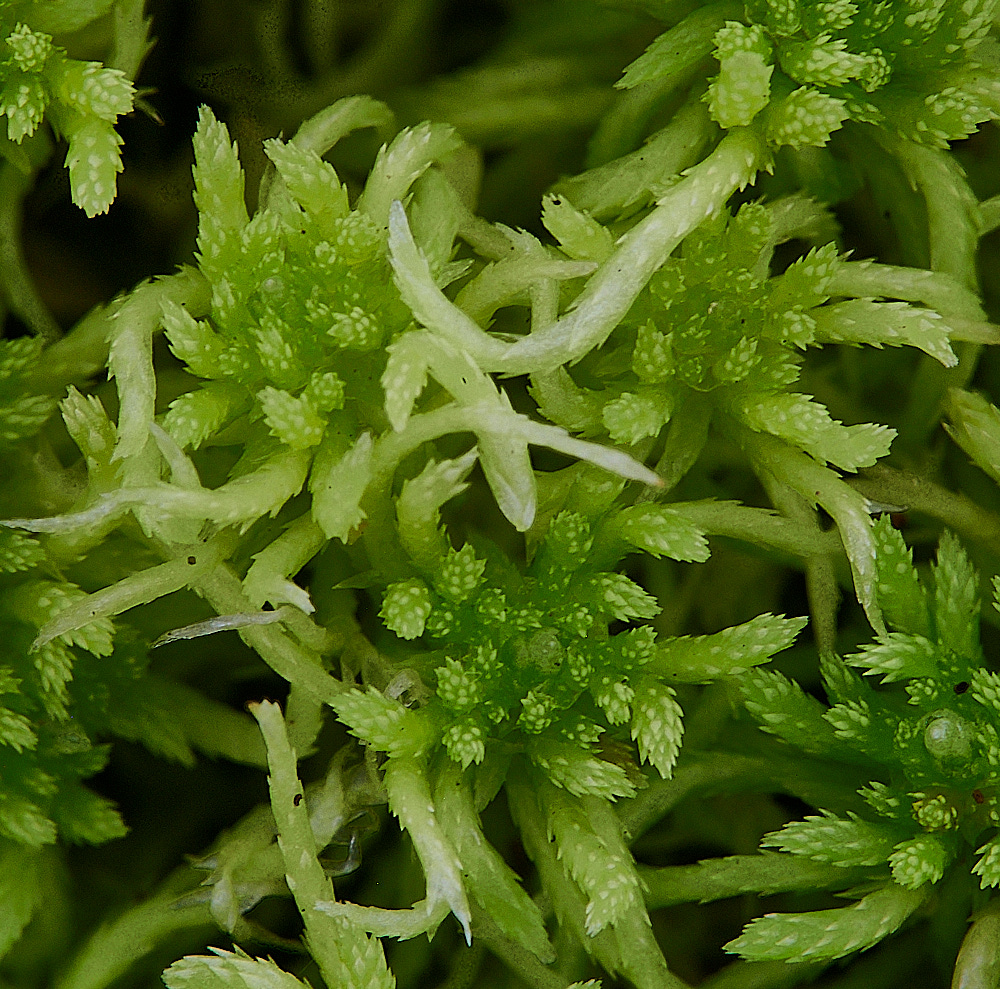


One of the first things to do when beginning to identify Sphagnums is deciding whether the branch leaves are hooded or not. In this case the branch leaves have no 3 dimensionality about them and are therefor not hooded.
The next thing is do to pinch the top bud (capitulum) away from the branches it sits on.
If it leaves a ruff of stem leaves like the one you can see in the image above it is likely to be Sphagnum fimbriatum.
Sphagnum fimbriatum is also quite brittle and the capitulum comes away easily in your fingers. Some Sphagnums are much tougher.
To go a step further you need to look at the shape of the stem leaves.
In this case the stem leaf is twice as wide as it is long.
Sphagnum fimbriatum
Blunt-leaved Bog Moss (Sphagnum palustre)

Sphagnum Sp?

Broom Fork-moss (Dicranum scoparium)
Silky Forklet-moss (Dicranella heteromalla) & Bifid Crestwort (Lophocolea bidentata)
Bifid Crestwort (Lophocolea bidentata)
Bog Groove-moss (Aulacomnium palustre)
Cley




A very still late afternoon - evening at Cley.
At least three Caspian Gulls came into roost. An adult, 2nd Winter, & 1st Winter




Pinkfeet (Anser brachyrhynchos)
Pinkfeet dropping into roost at Cley
Titchwell

Ruff (Philomachus pugnax)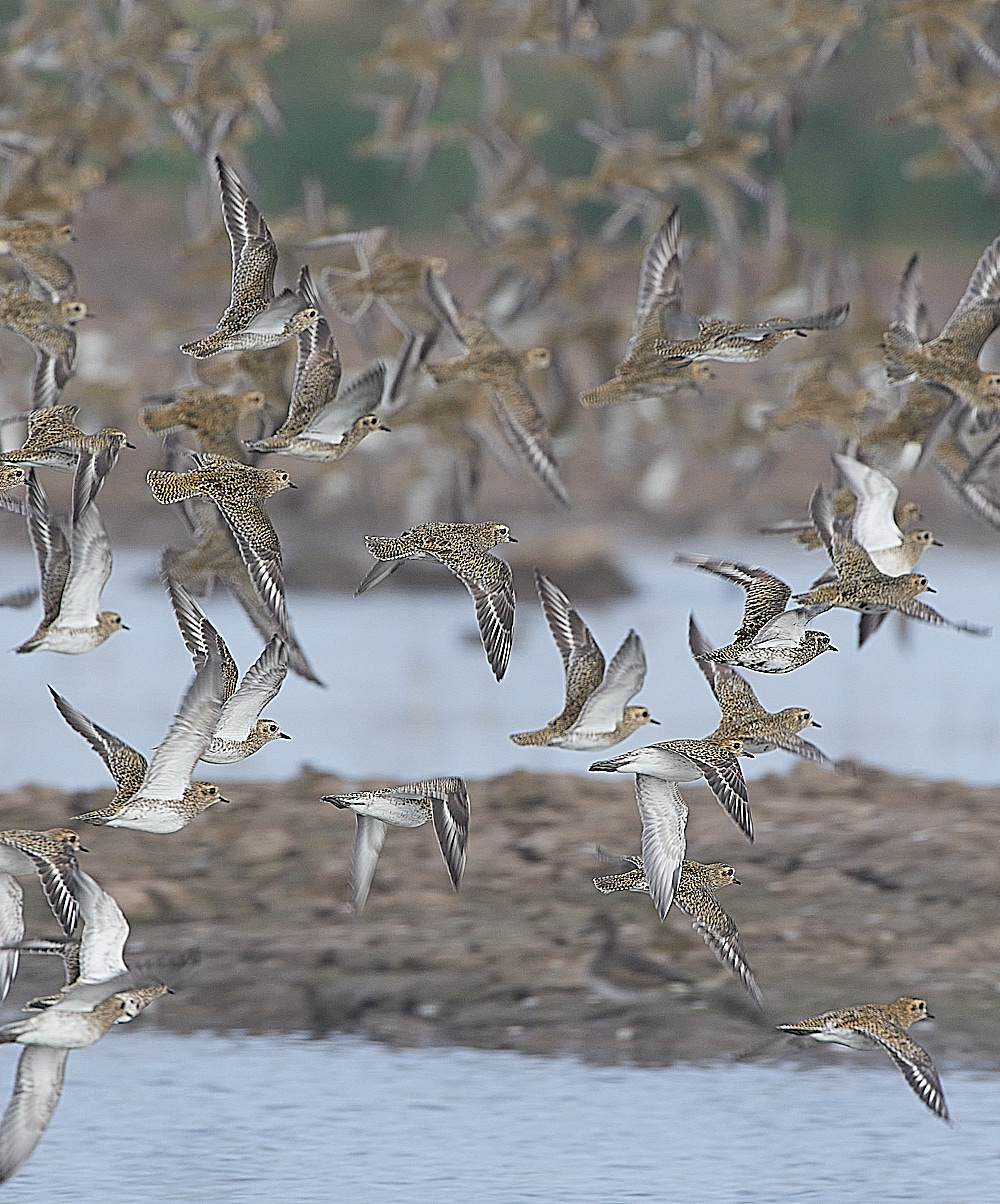


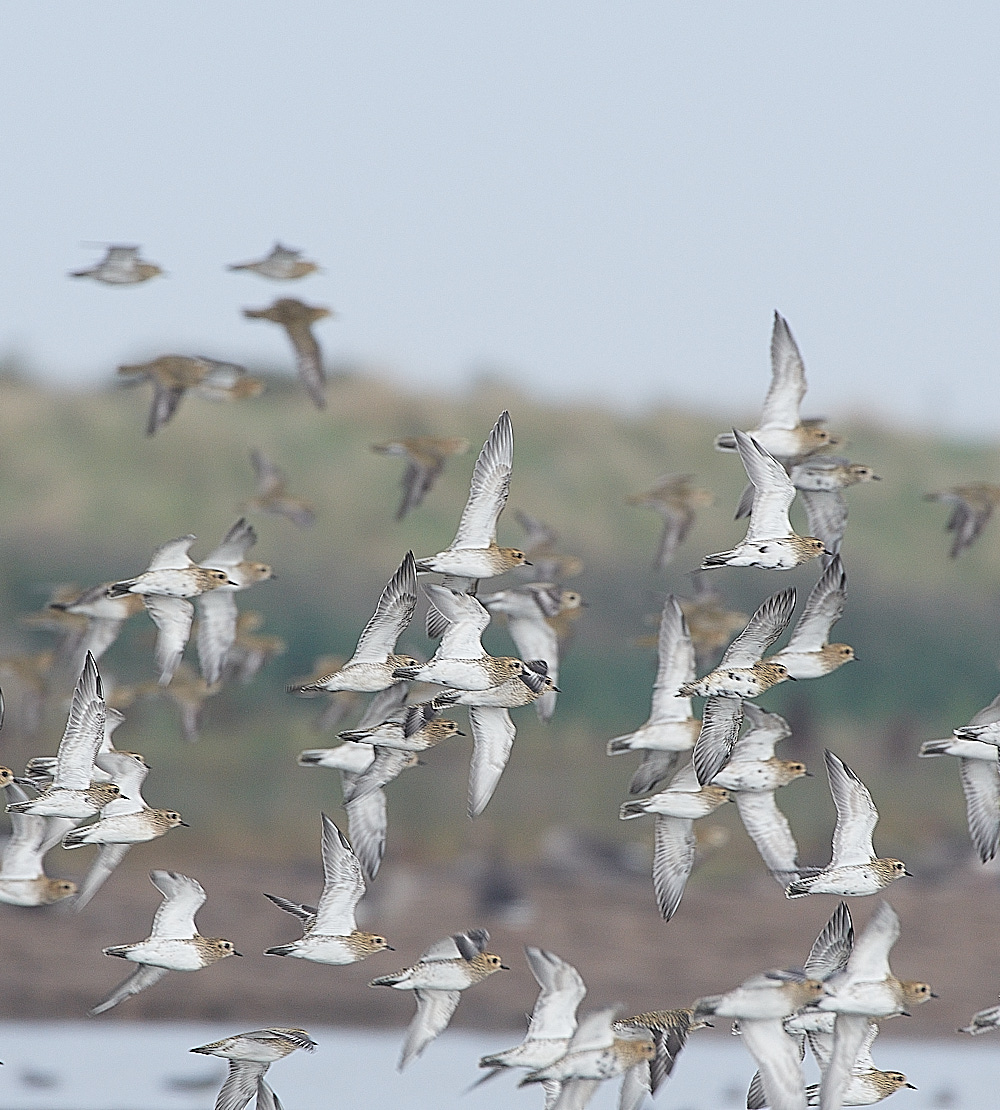
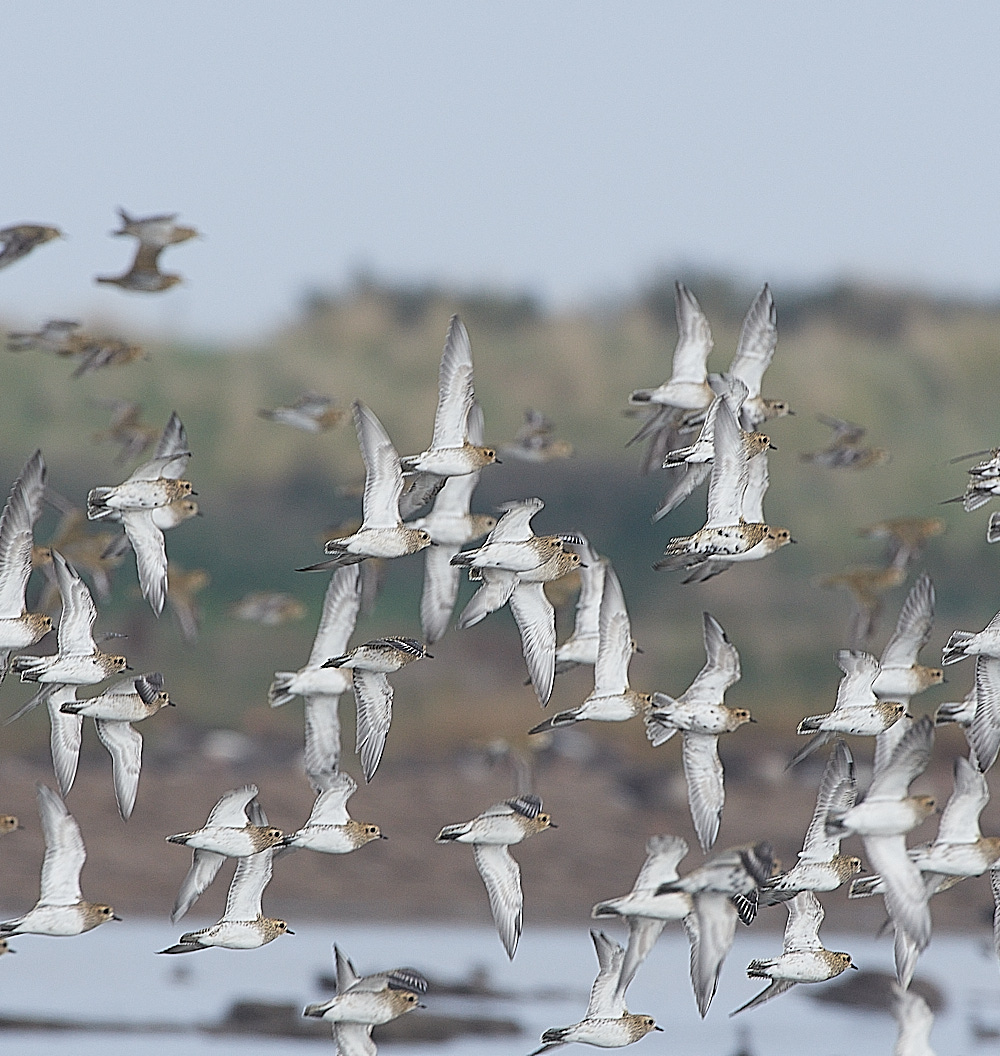
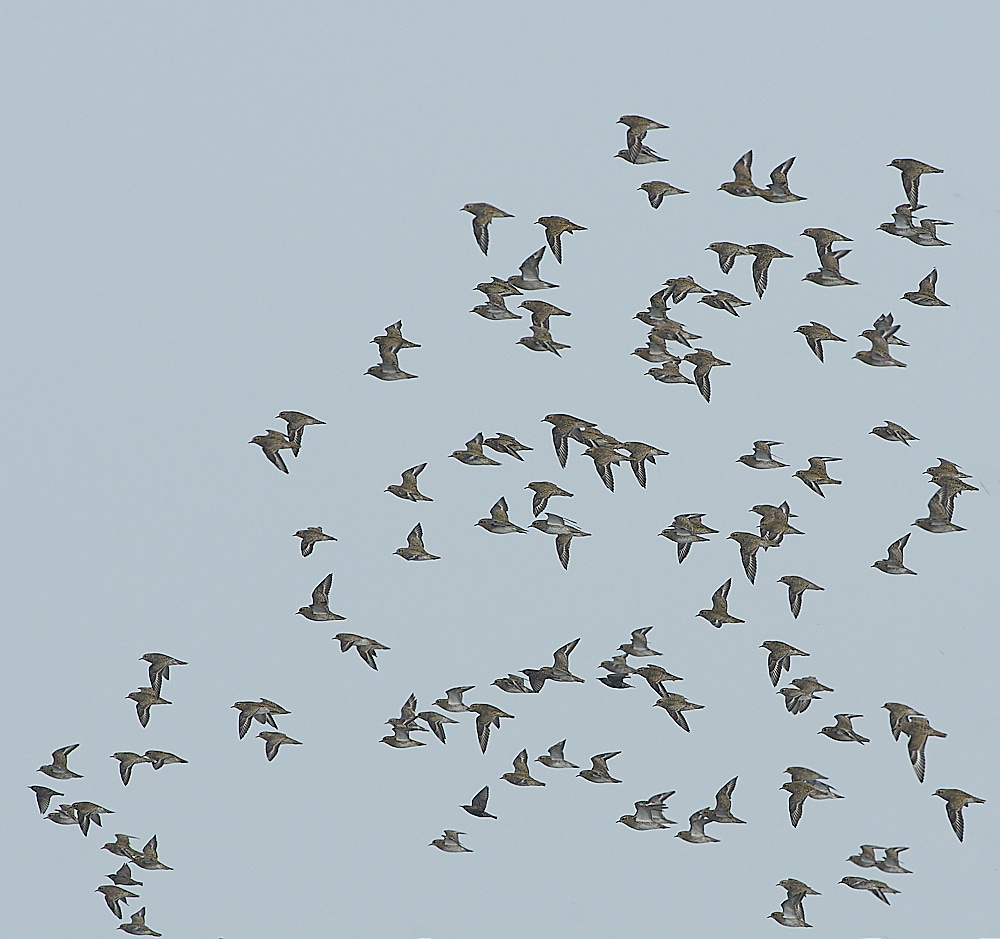
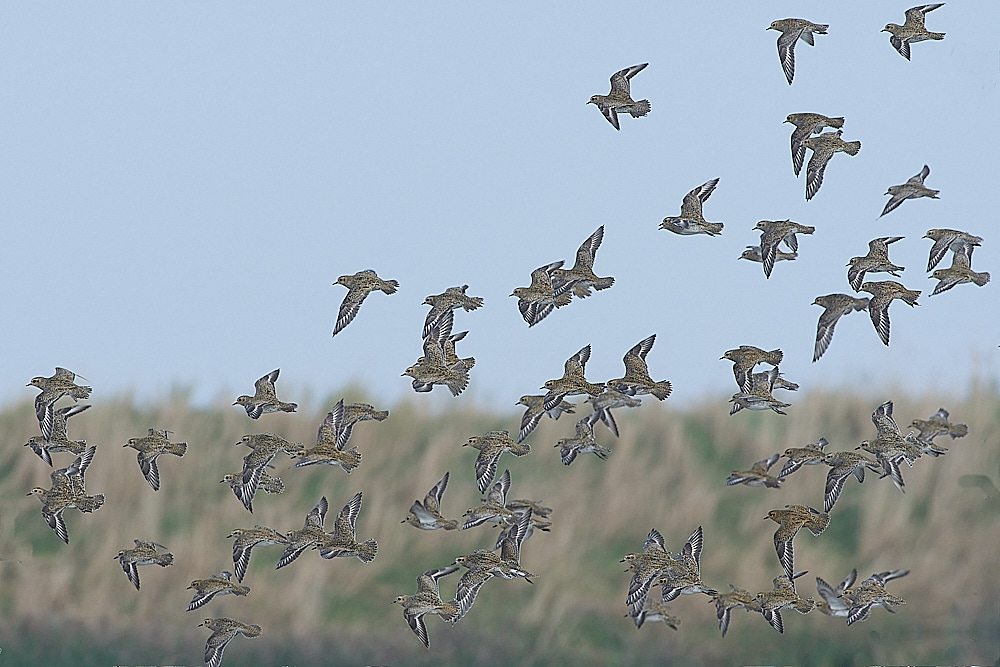

With all the new earthworks on the Titchwell scrape the Golden Plover were within reach of a lens.
Golden Plover (Pluvialis apricaria)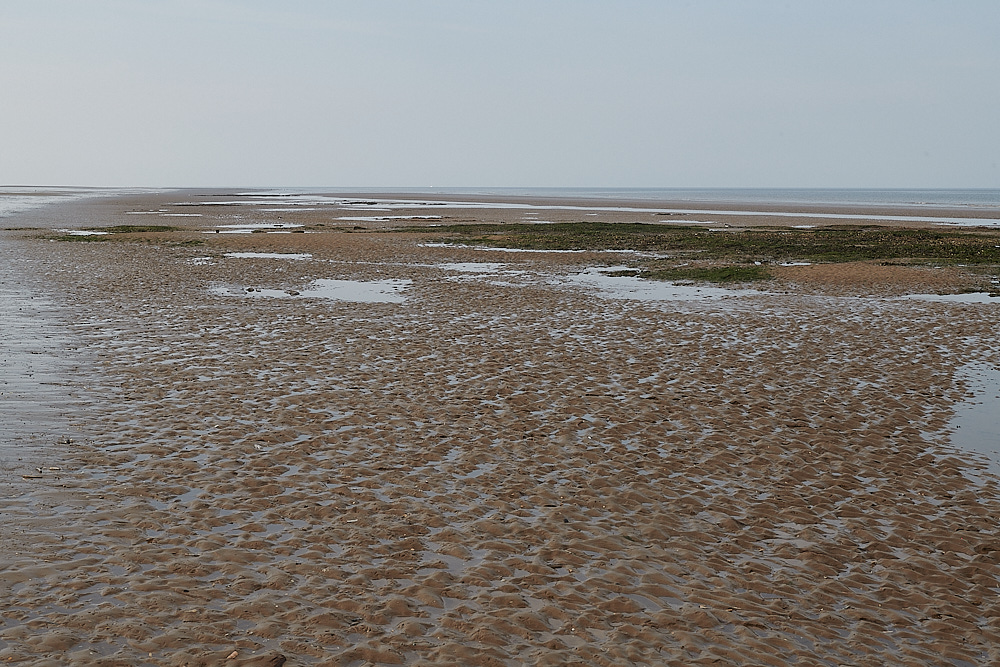




A small flock of Knot (Calidris canutus) & a few Black-tailed Godwit (Limosa limosa) on the tide line.




A few Curlew (Numenius arquata) delicately picking at the shells
















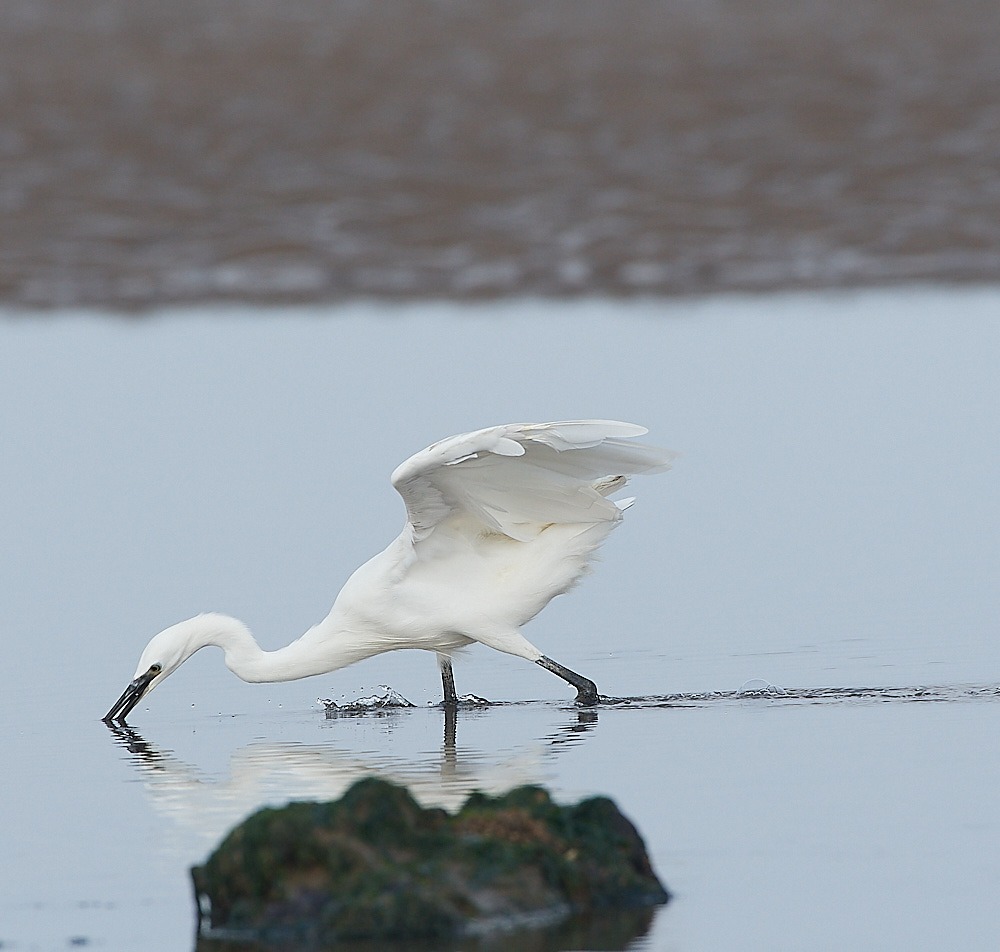
A Little Egret (Egretta garzetta) giving a consumate display of fishing skills in a tide pool.





and
a
small party
of
Bearded Tit (Panurus biarmicus)
dropped in for a few moments.
Snettisham



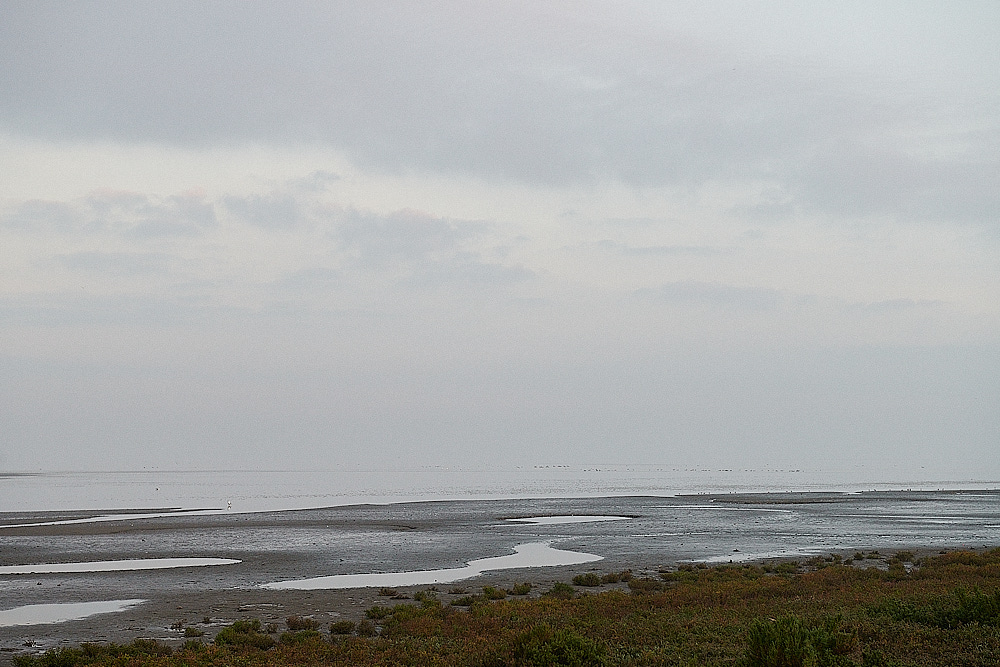




Little Egret (Egretta garzetta)


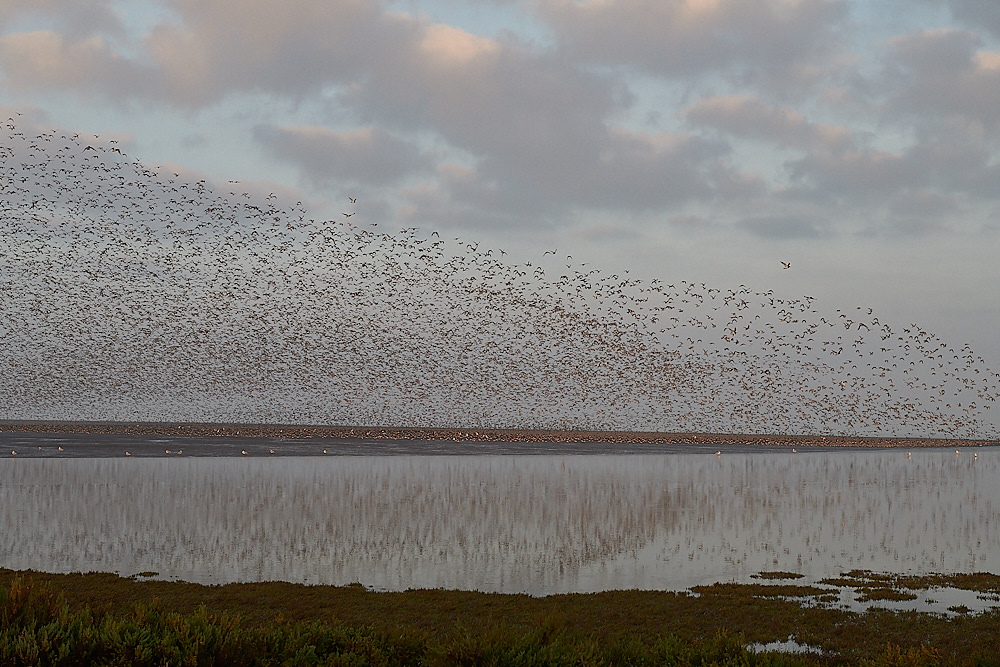



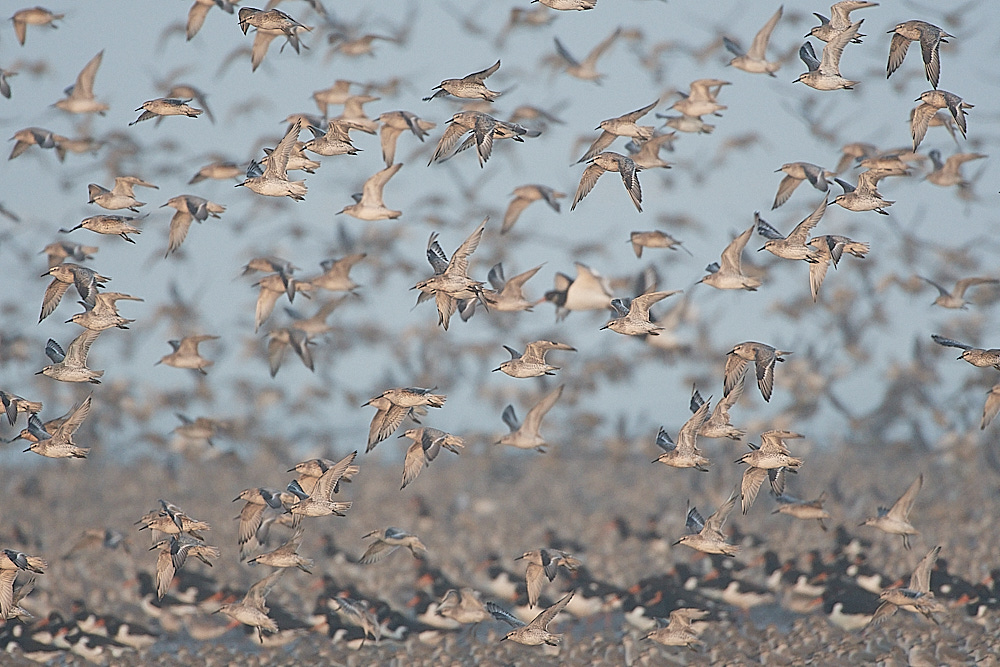


Knot & Oystercatcher













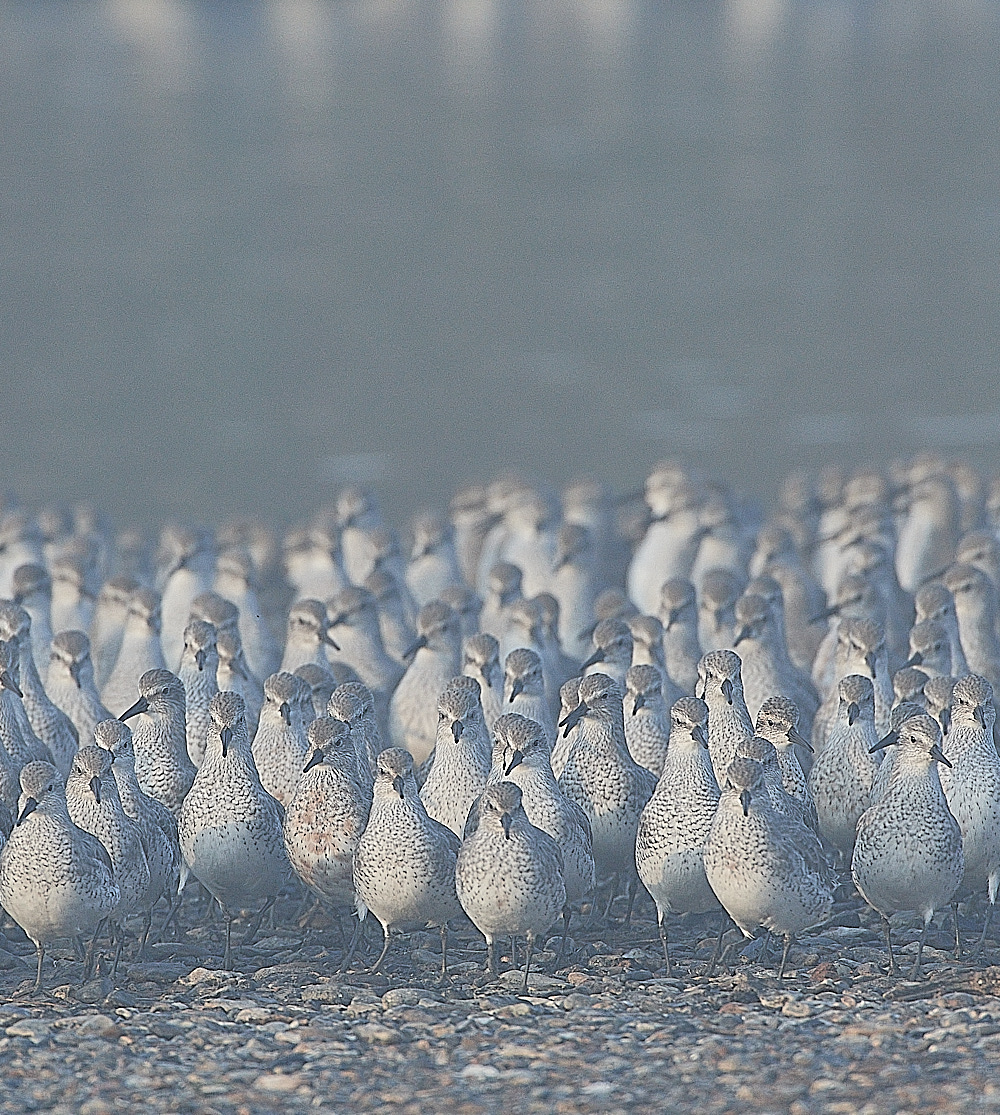

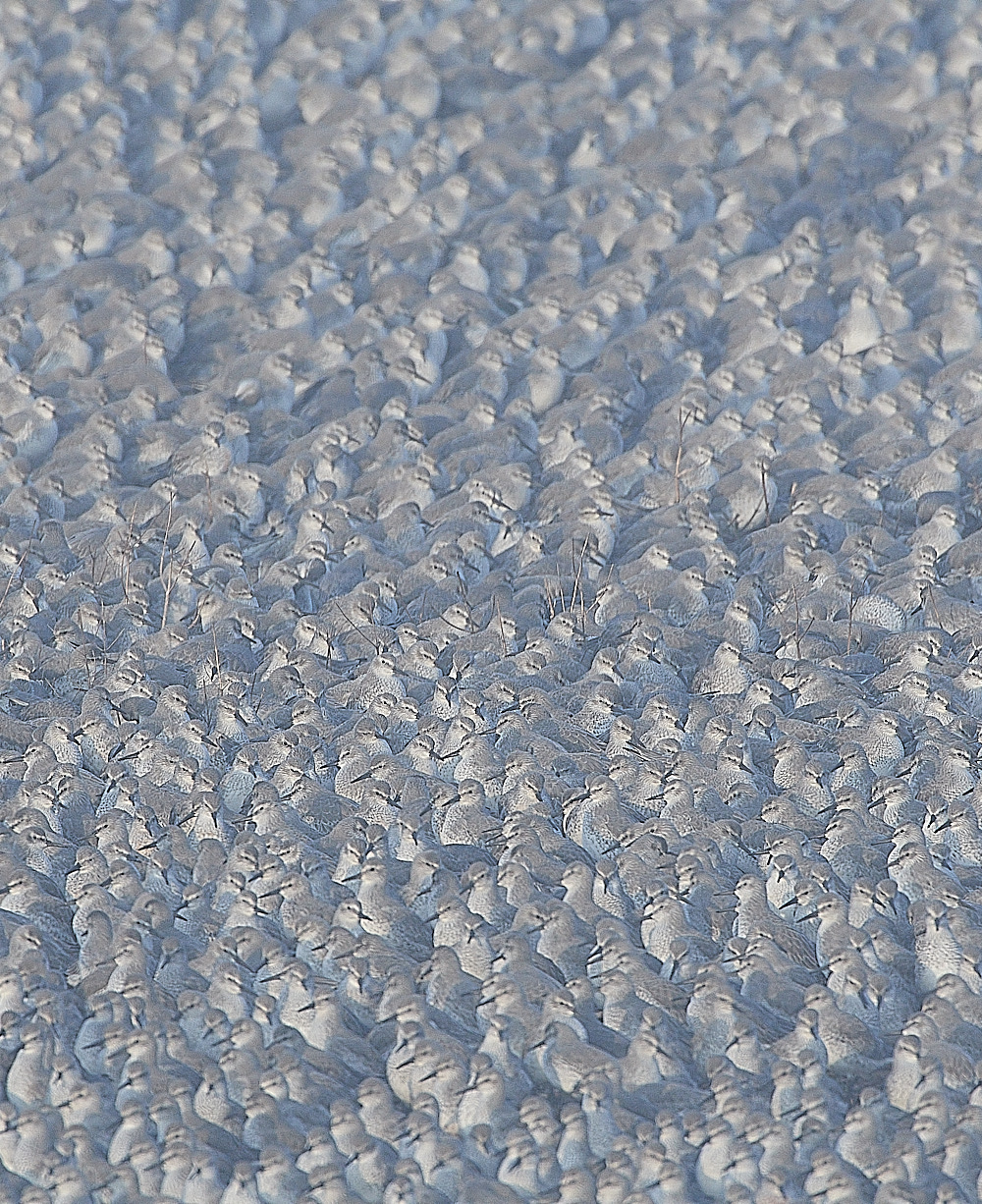









Knot (Calidris canutus)





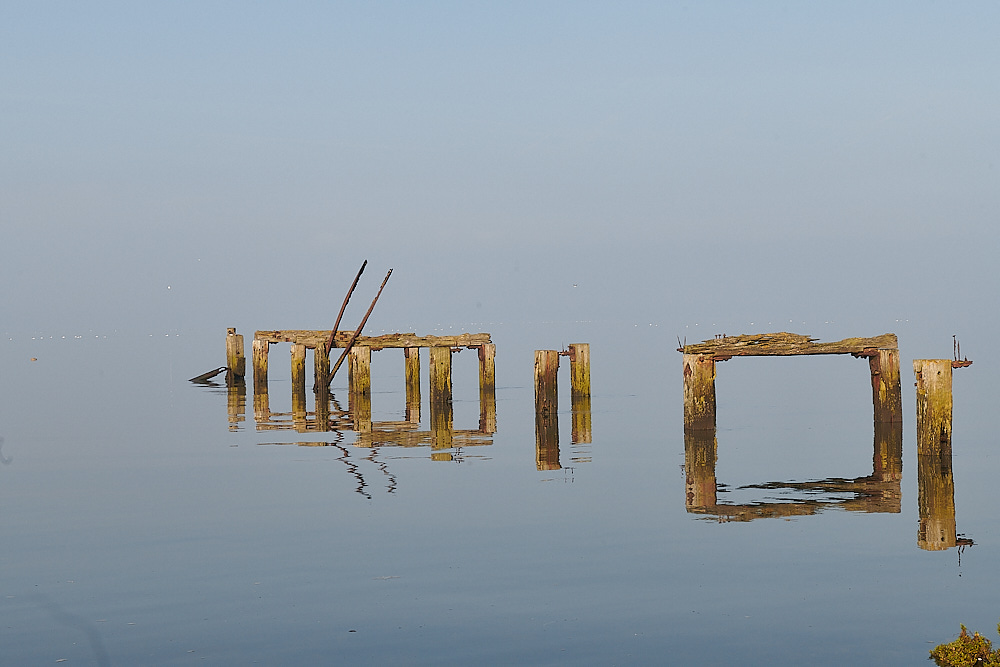


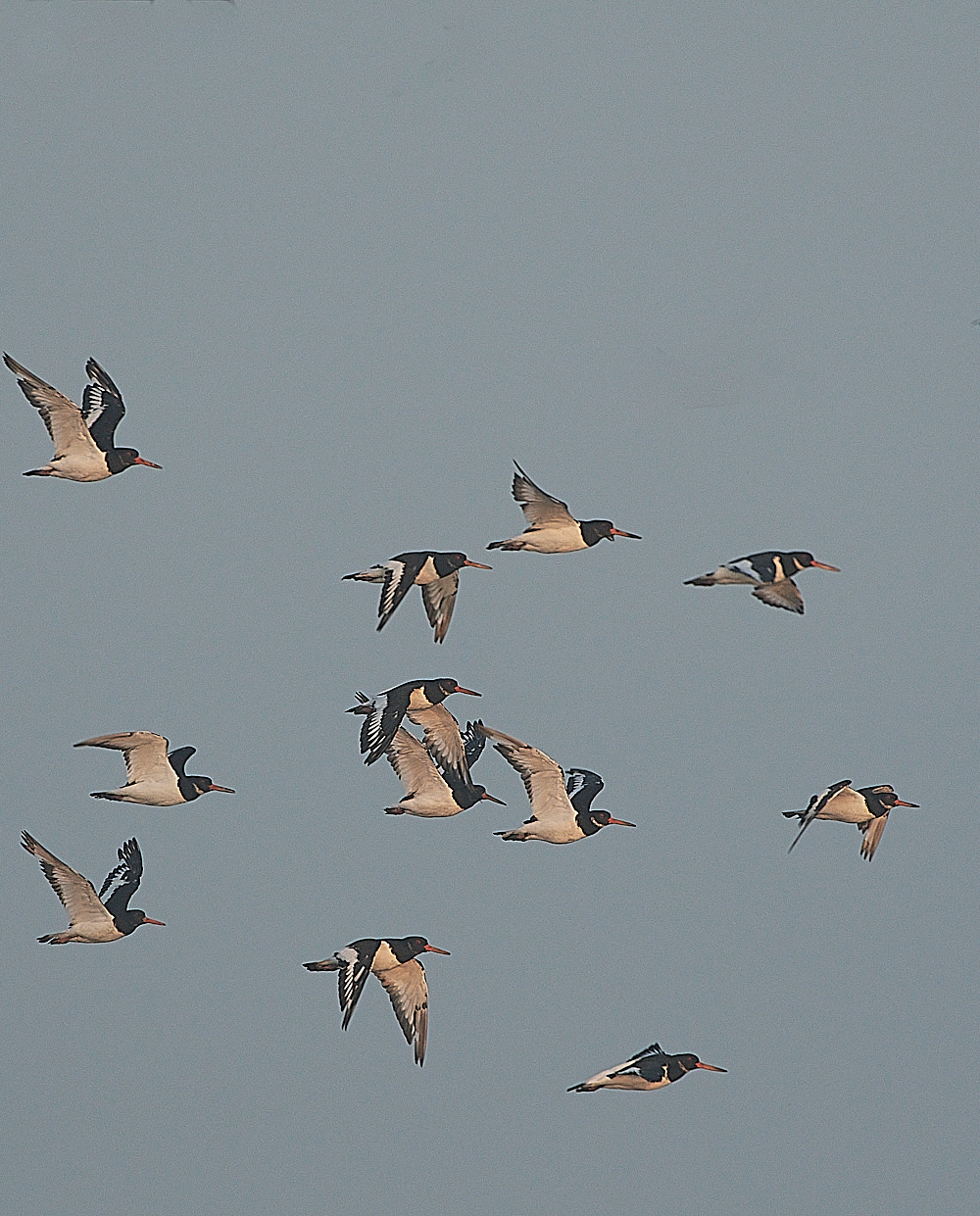
Oystercatcher (Haematopus ostralegius)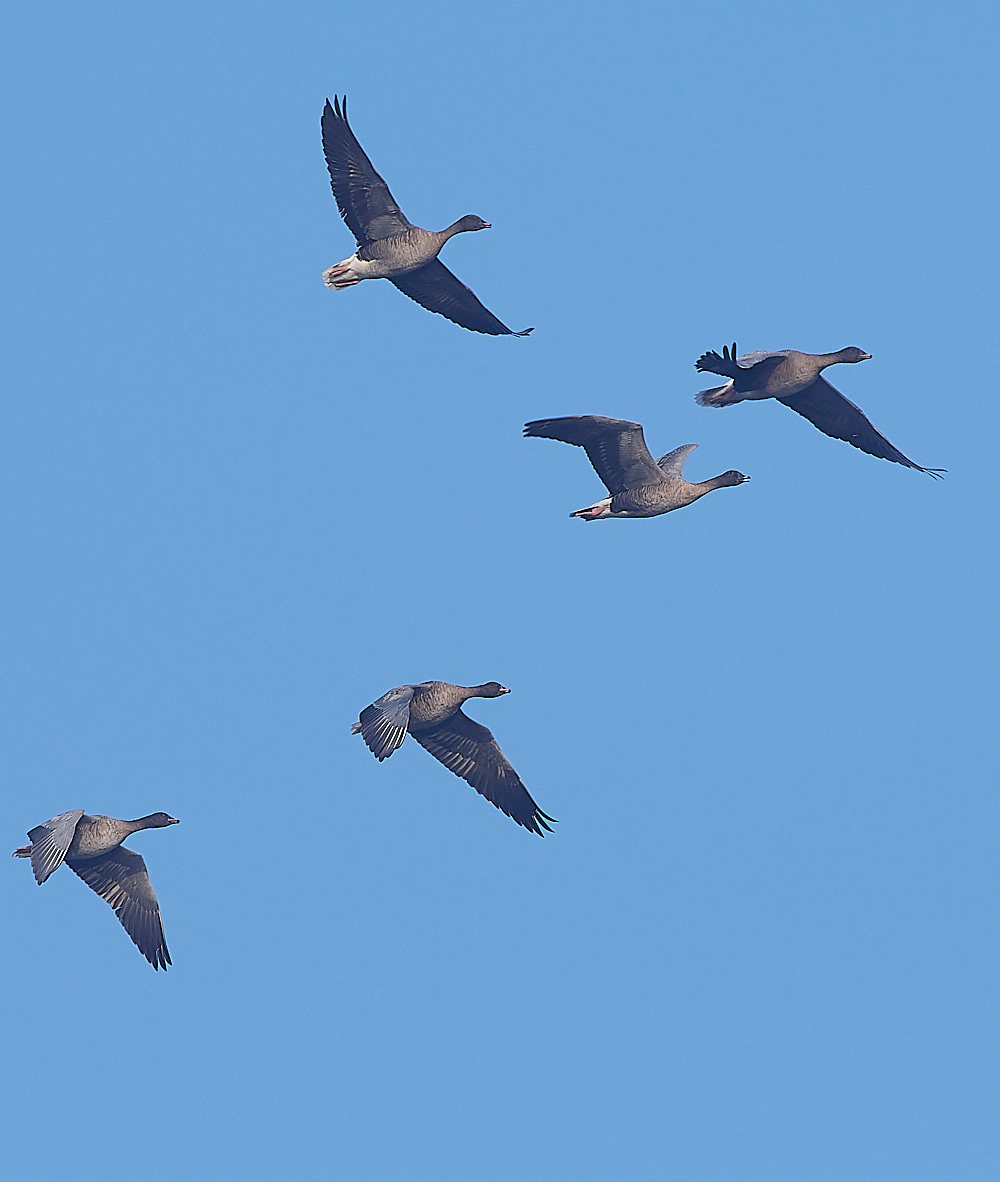
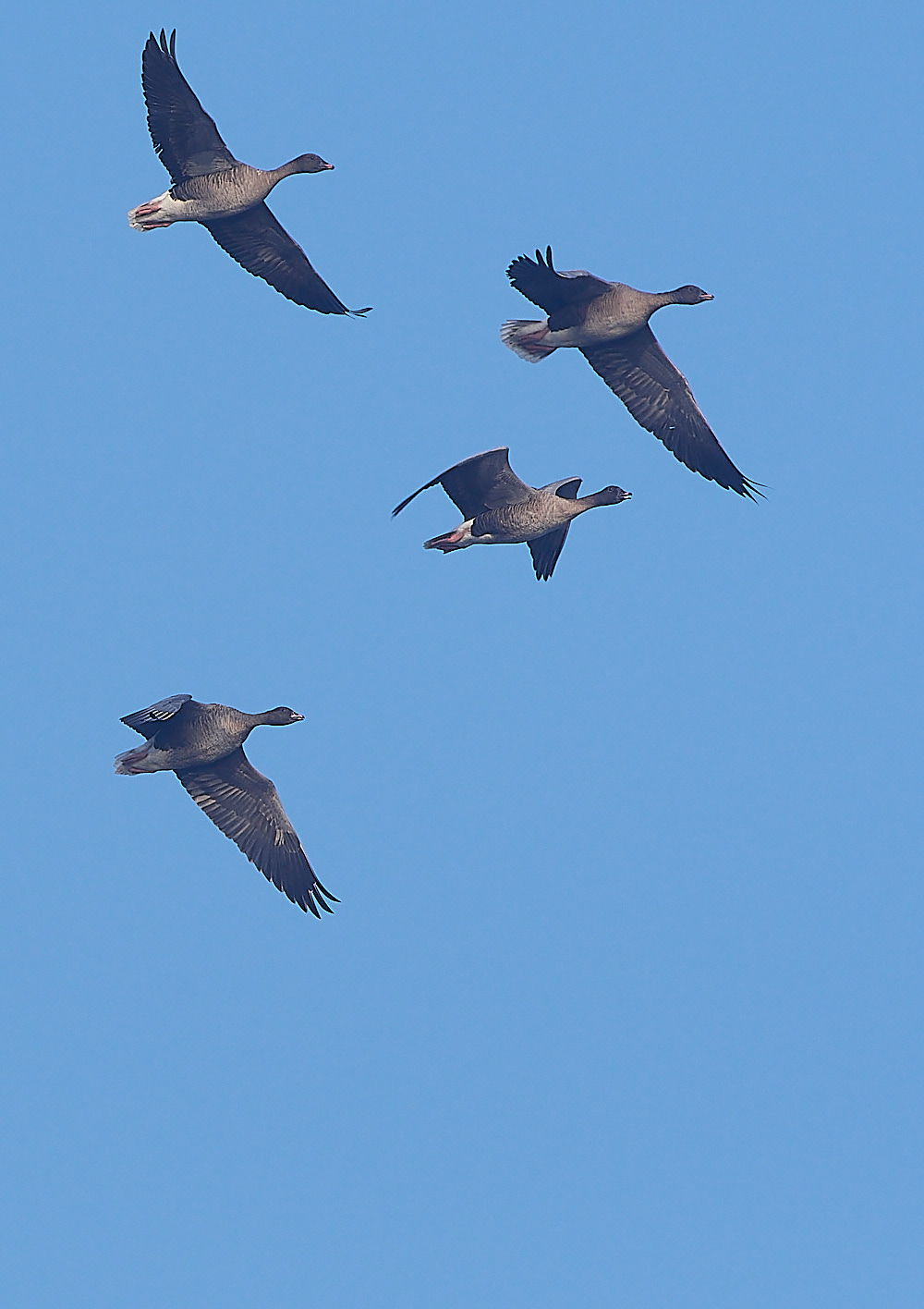


Pink Footed Geese (Anser Brachyrhynchus)




Dunlin (Calidris alpina)

Black-headed Gull (Chroicocephalus ridibundus)
Yellow-horned Poppy (Glaucium flavum)
Cley - Salthouse - Weybourne
Cley Beach





Brent geese (Branta bernicla)
Guillemot (Uria aalge)

Yes. The Cormorant had it.
Salthouse Beach


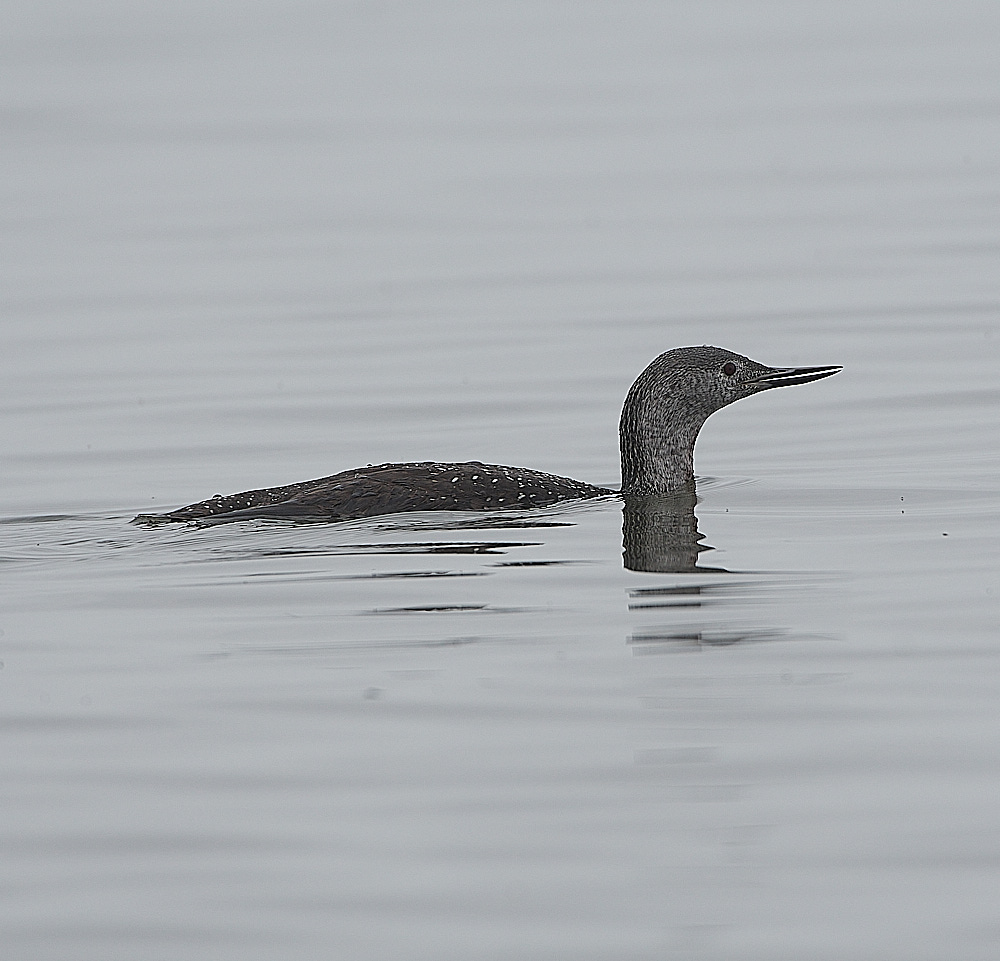

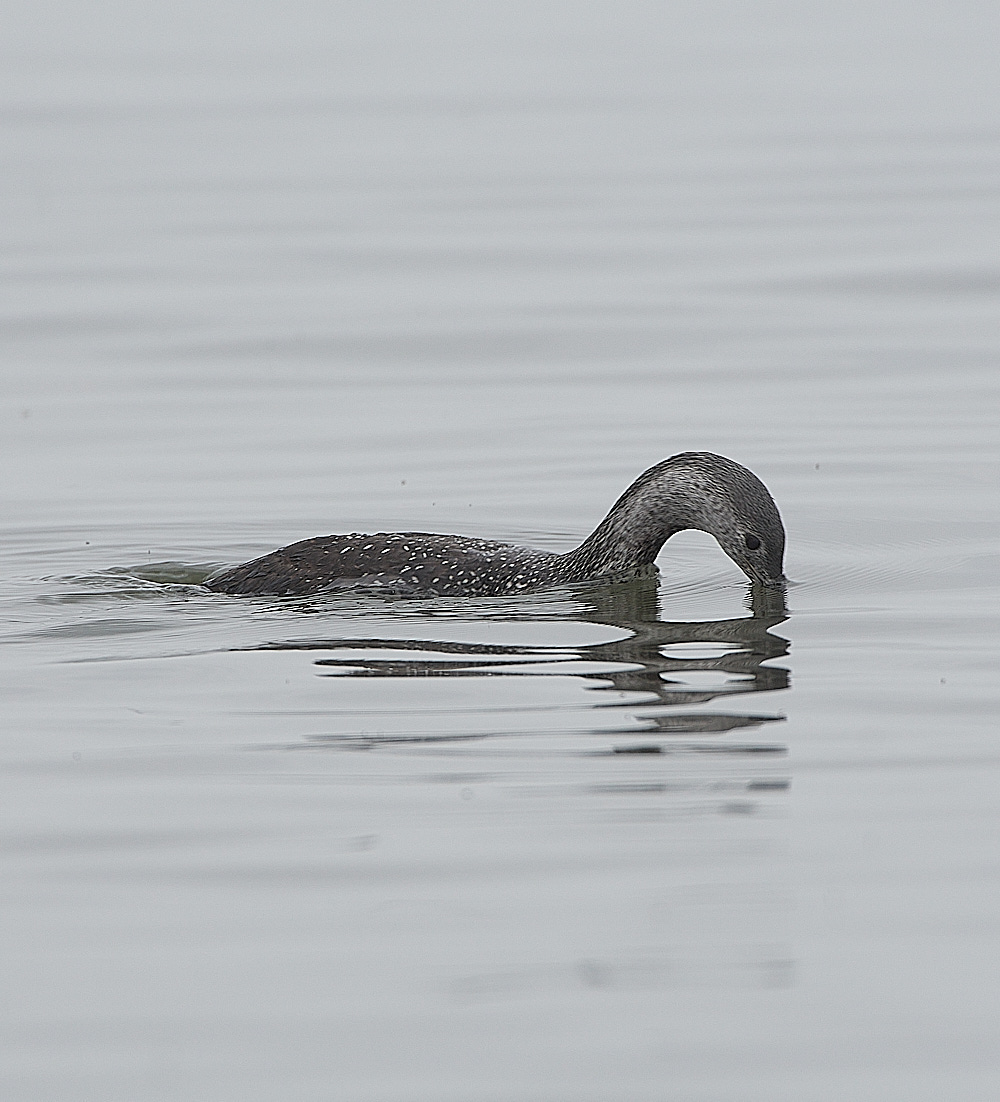

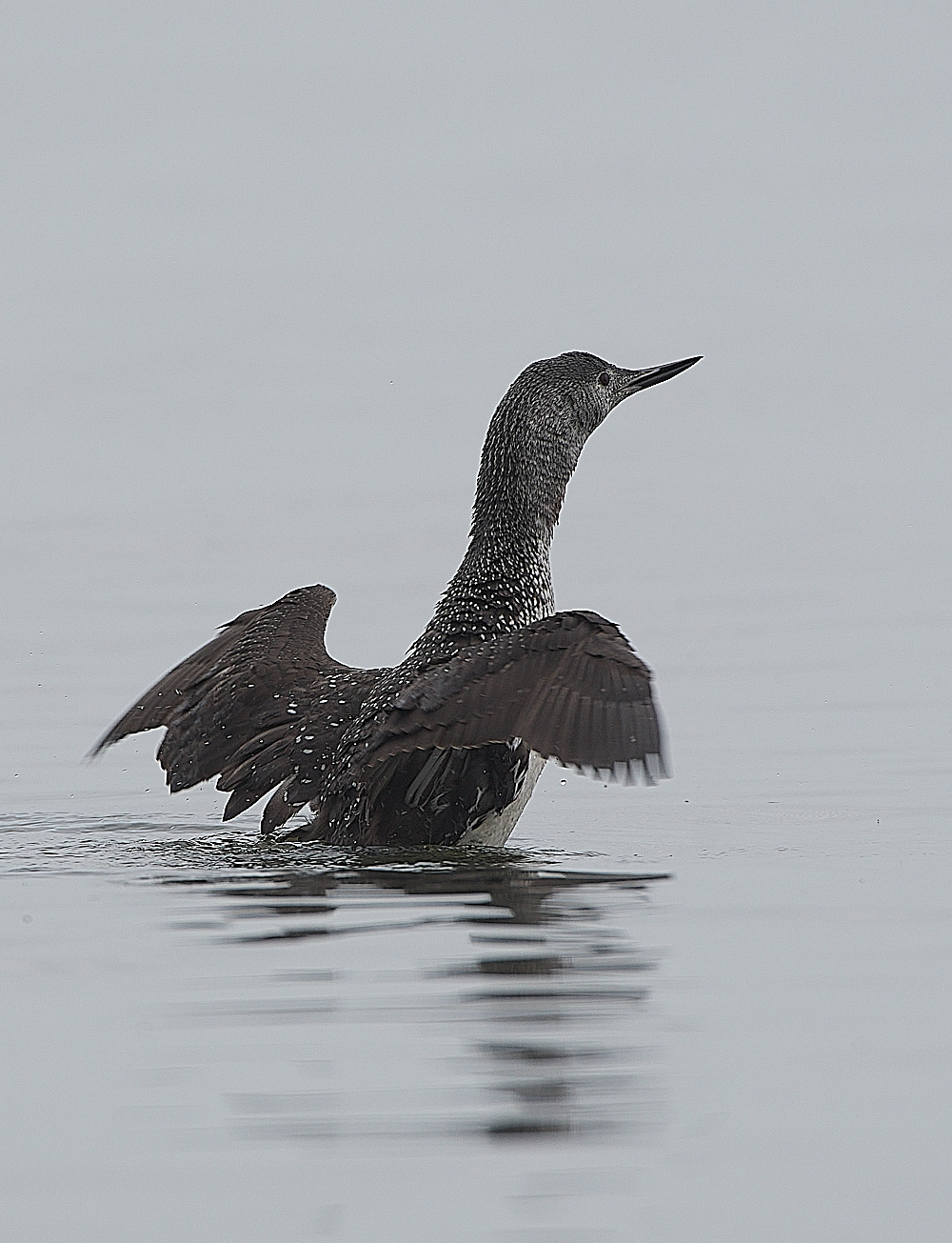




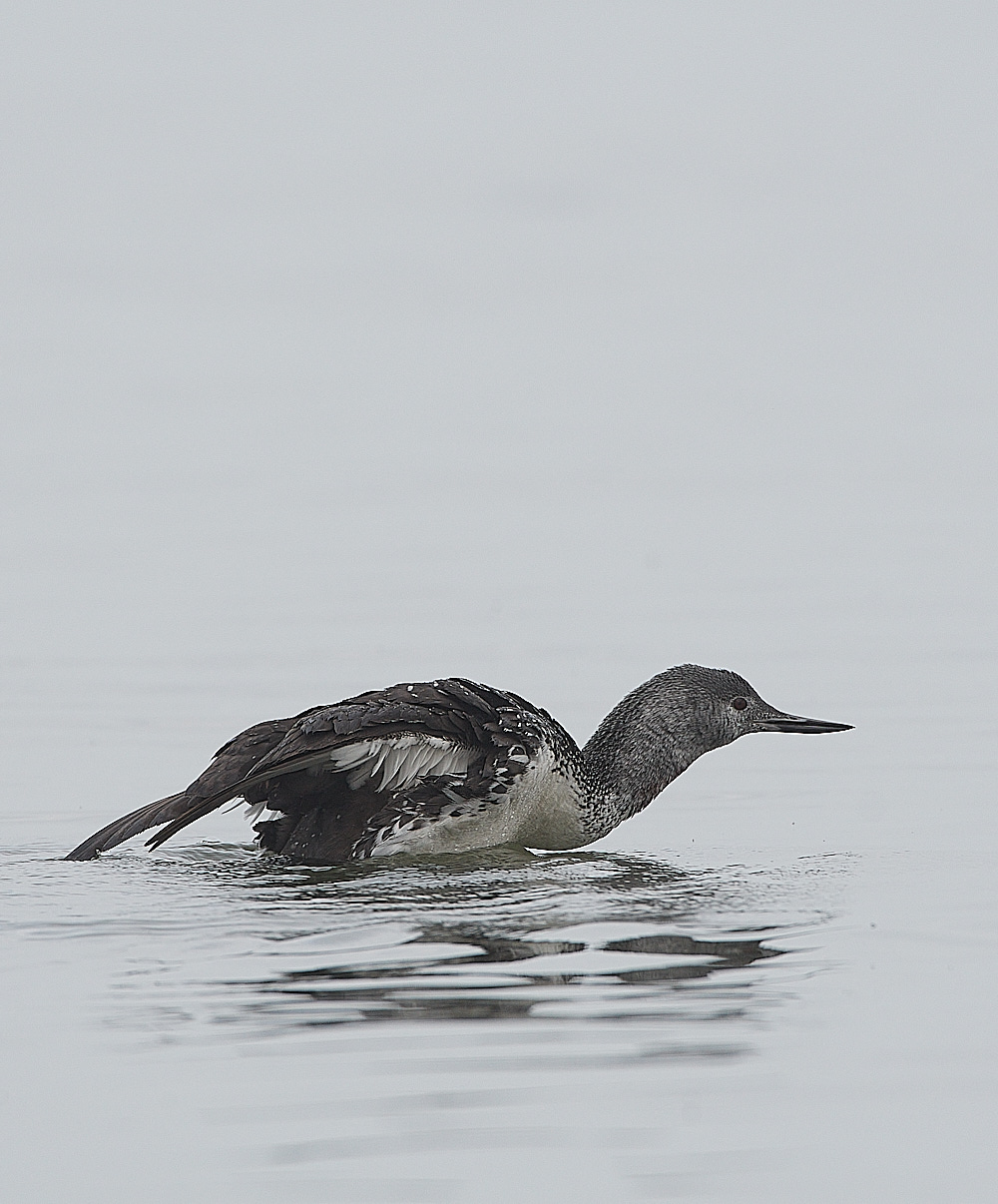


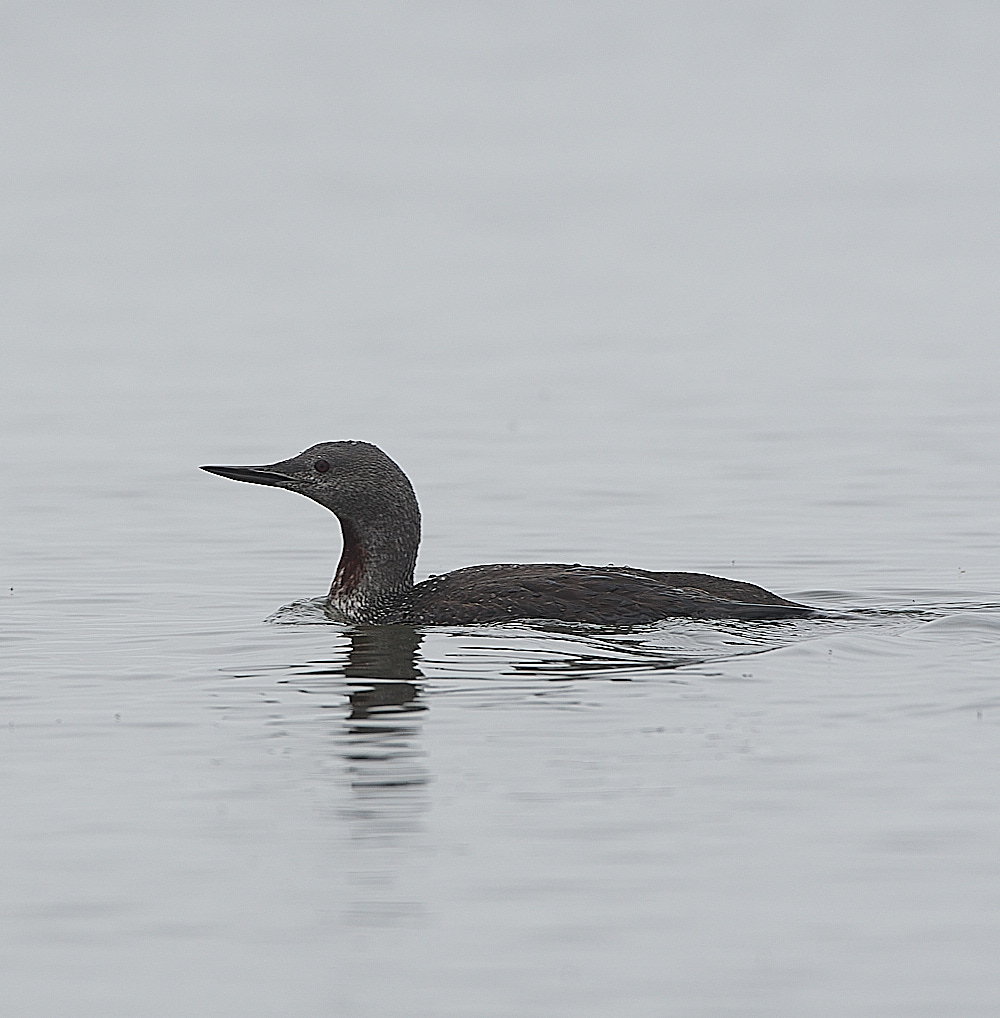
Red Throated Diver (Gavia stellata)
Weybourne Beach






Guillemot (Uria aalge)


